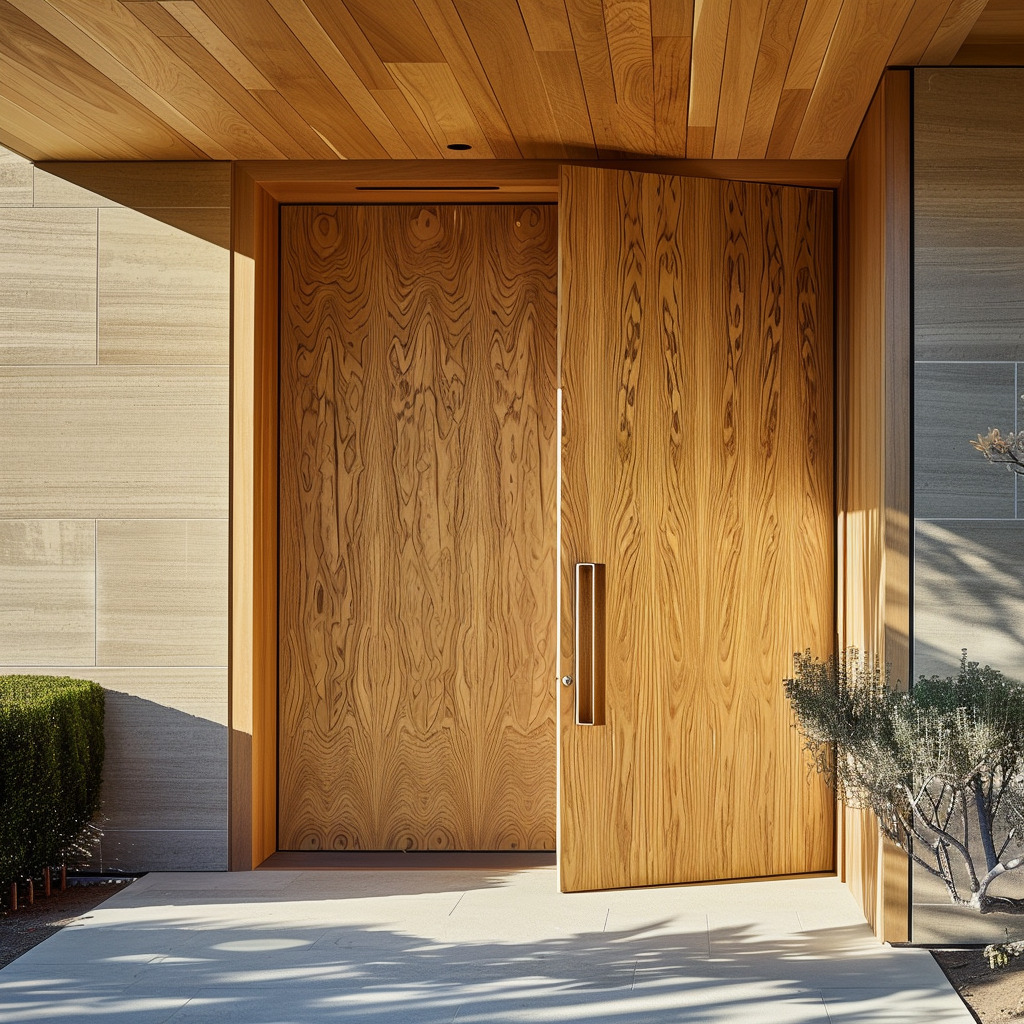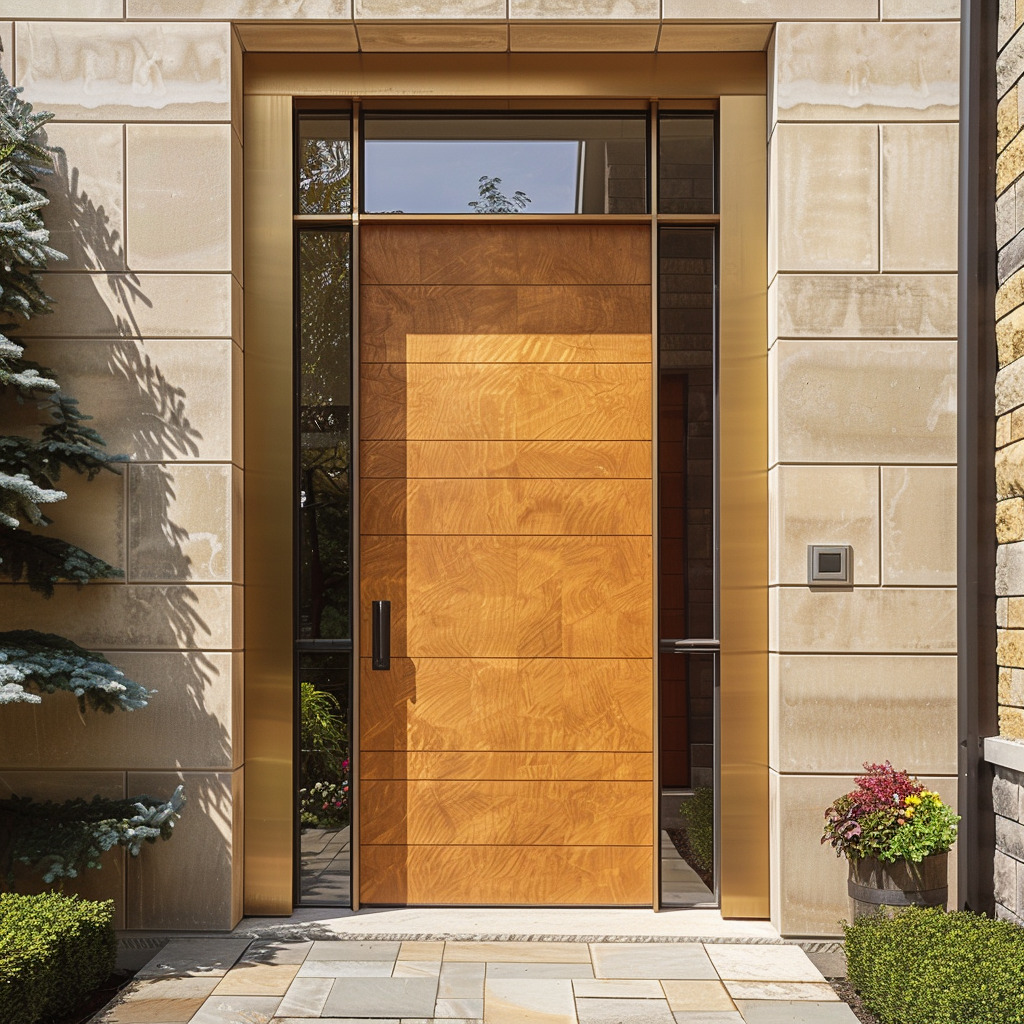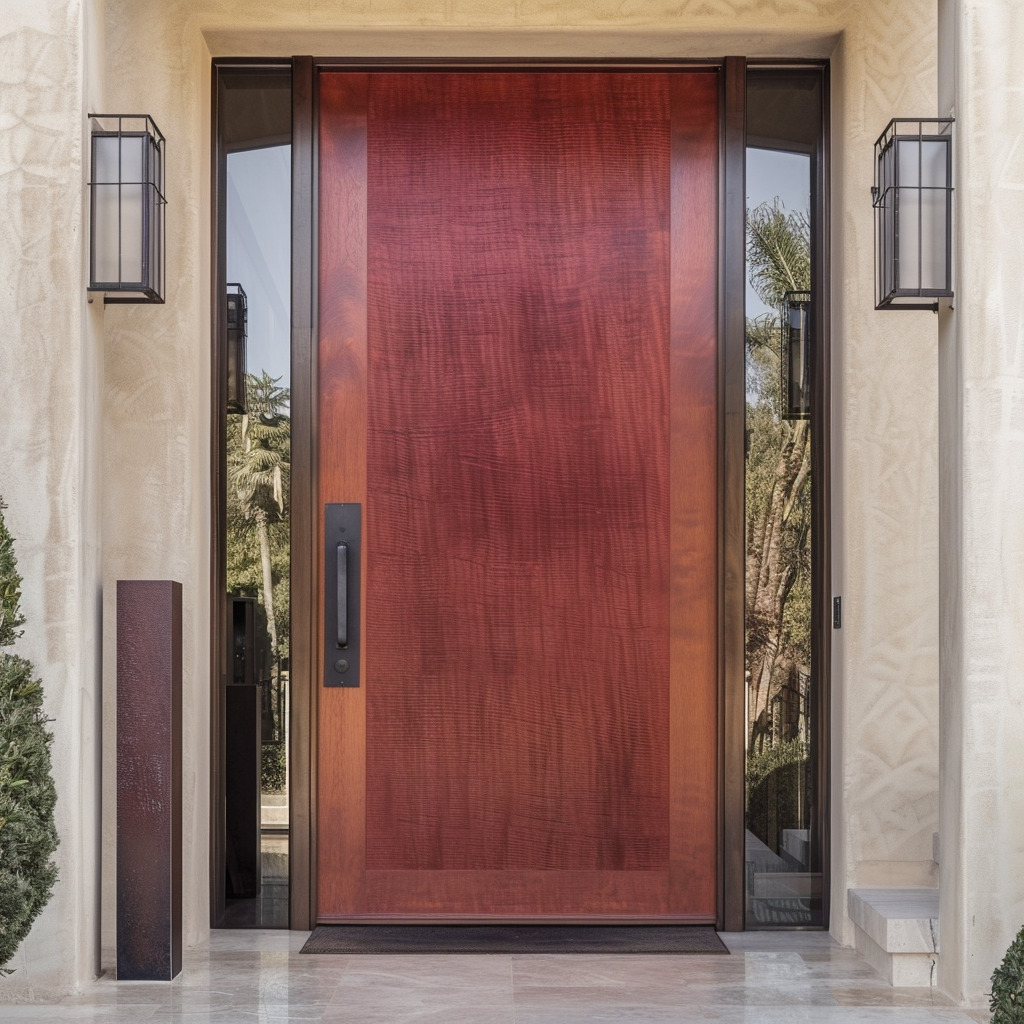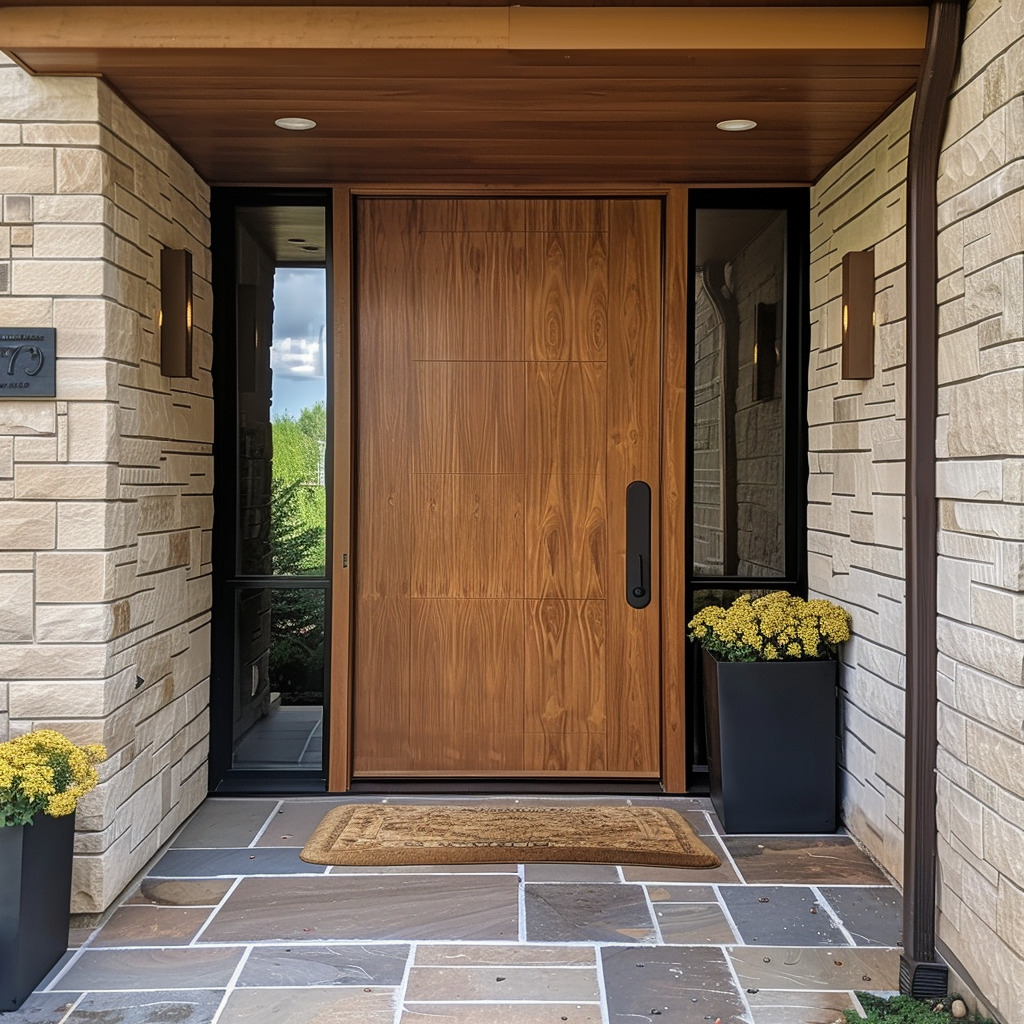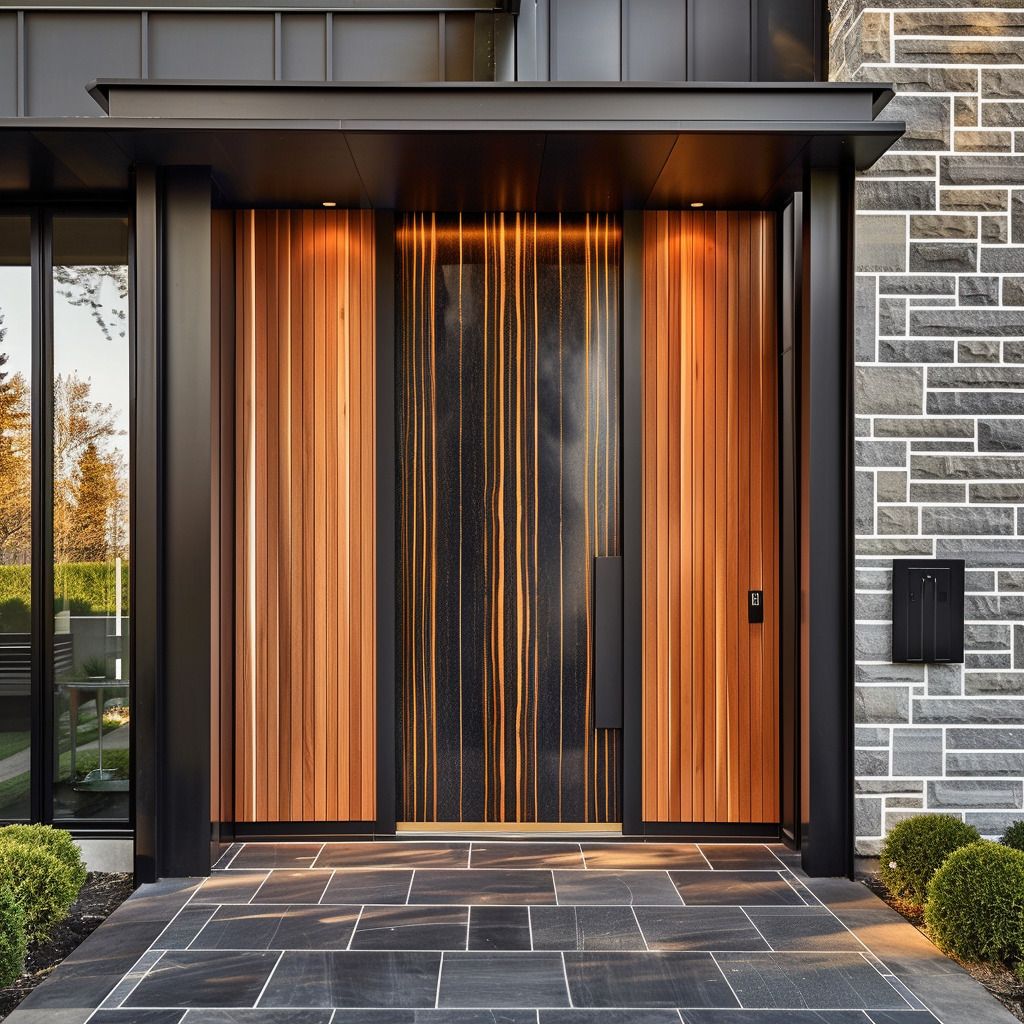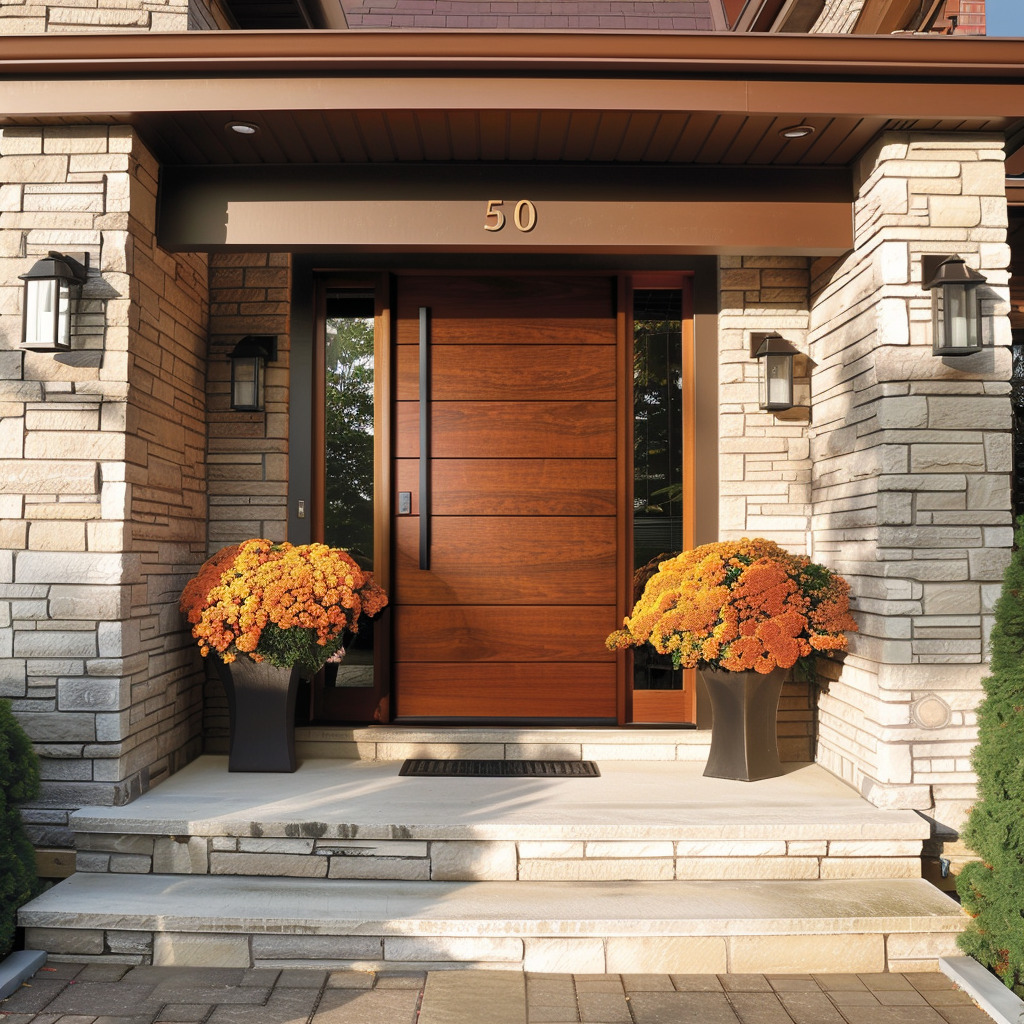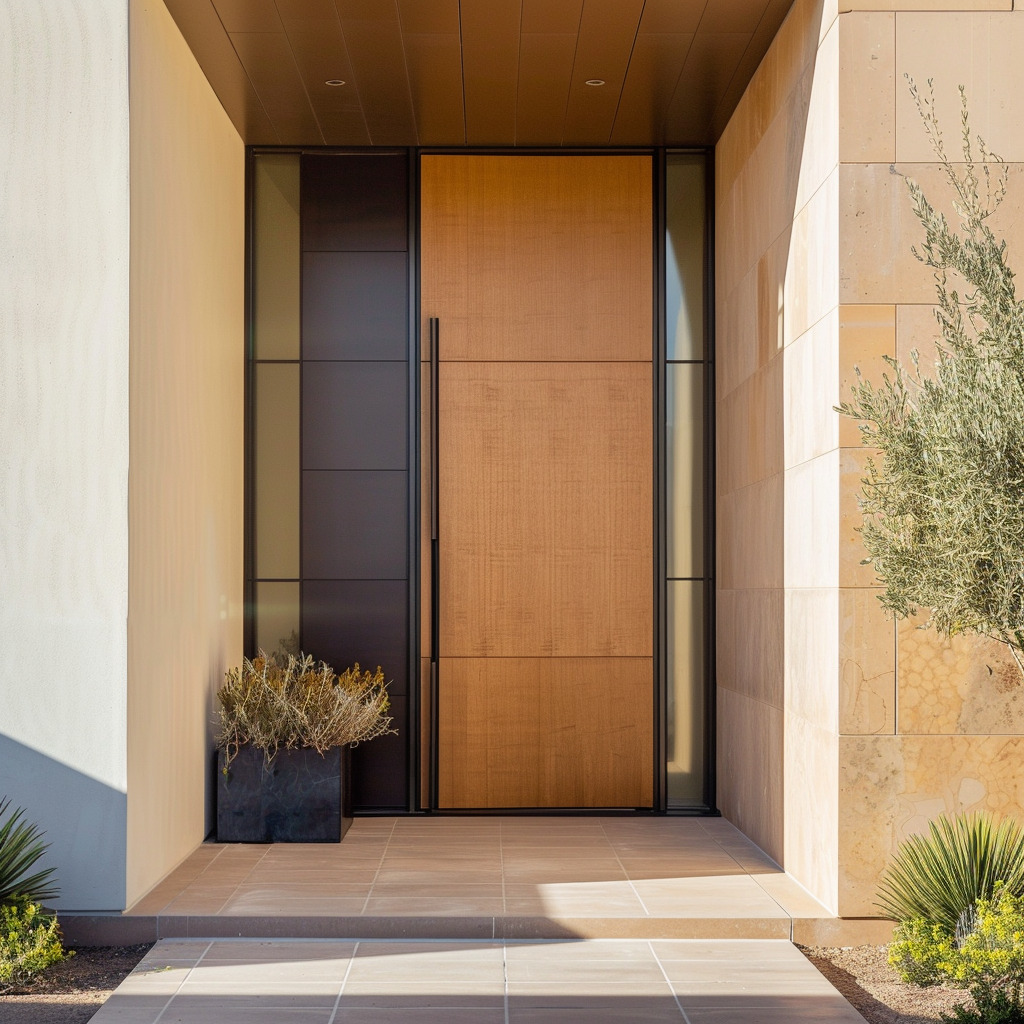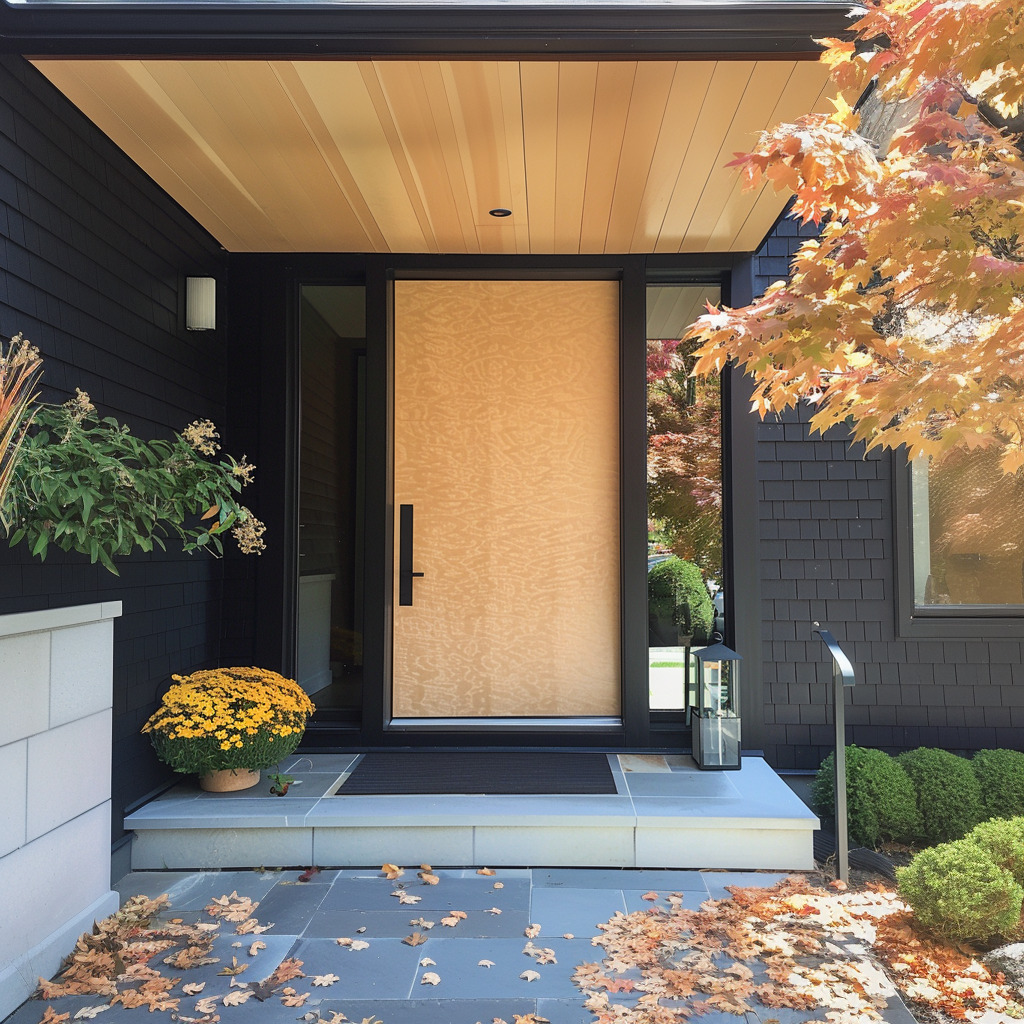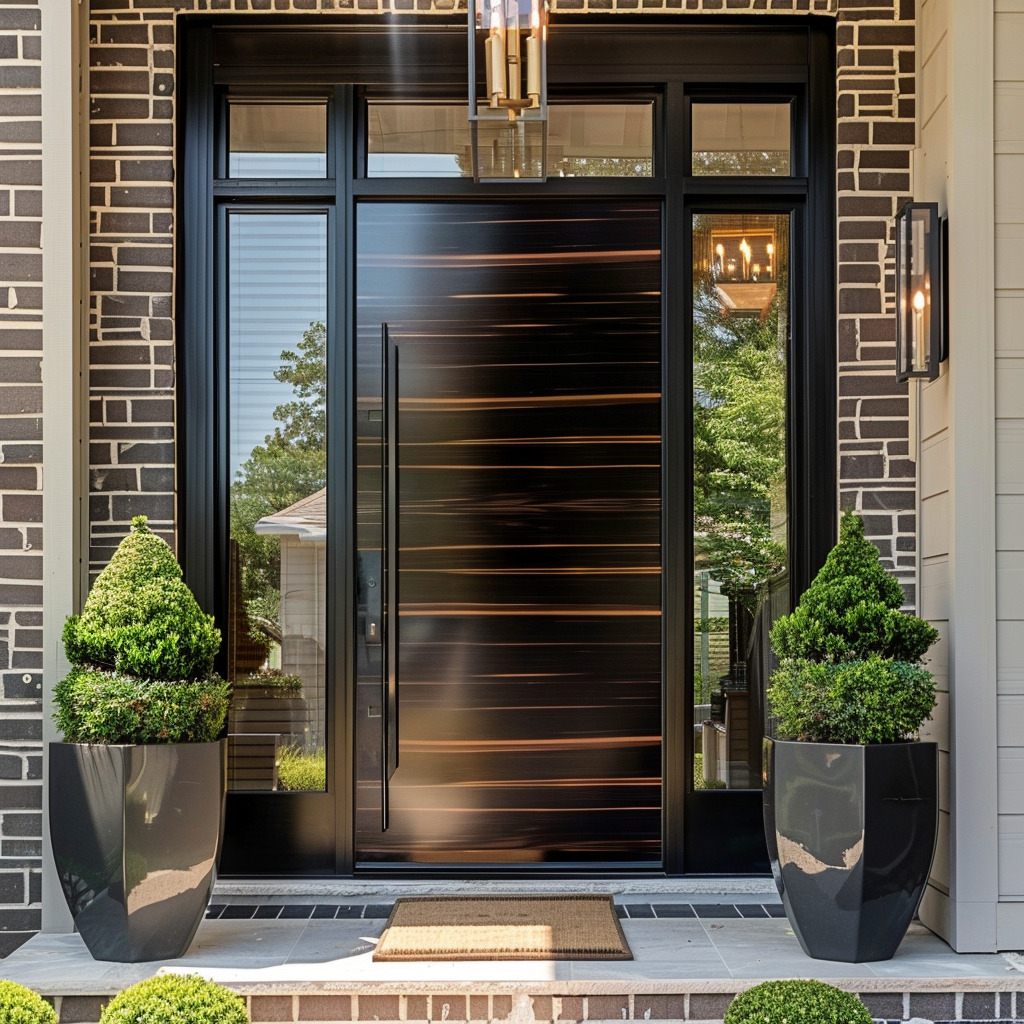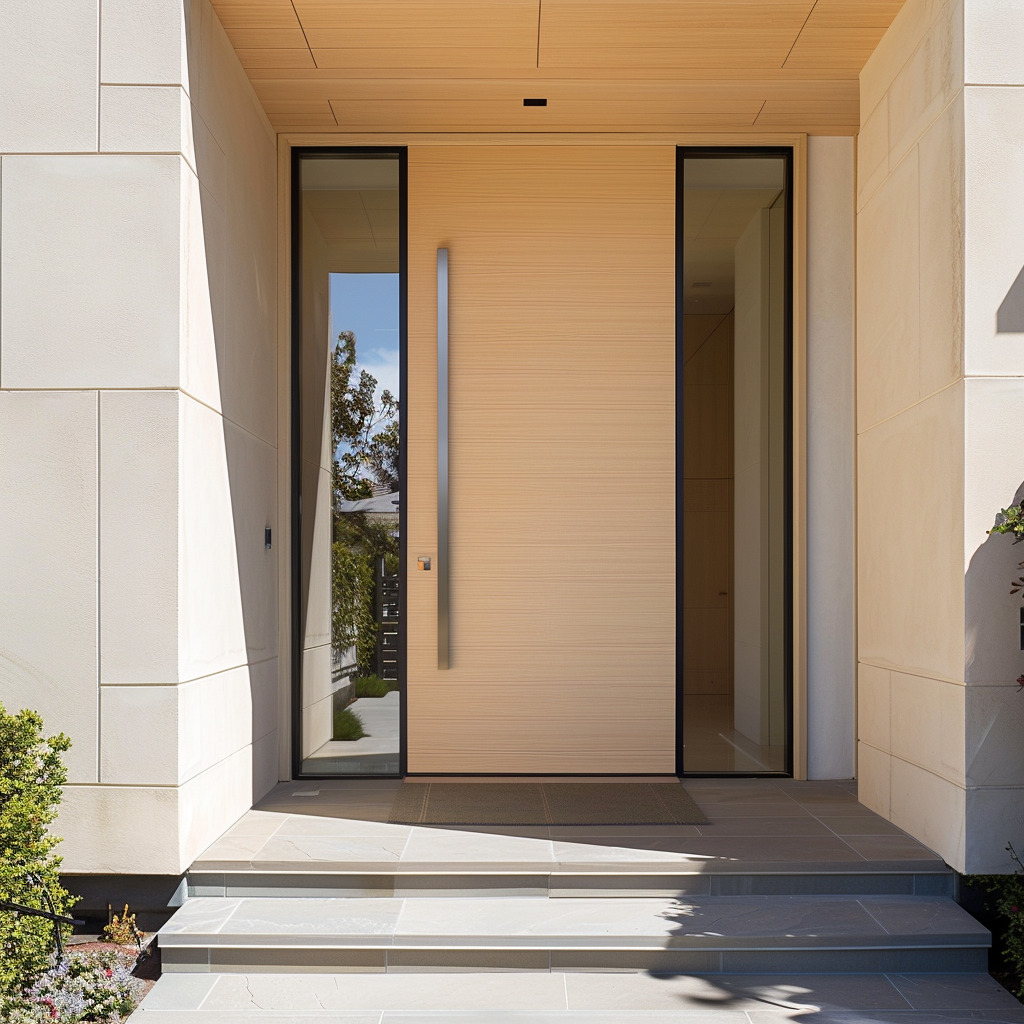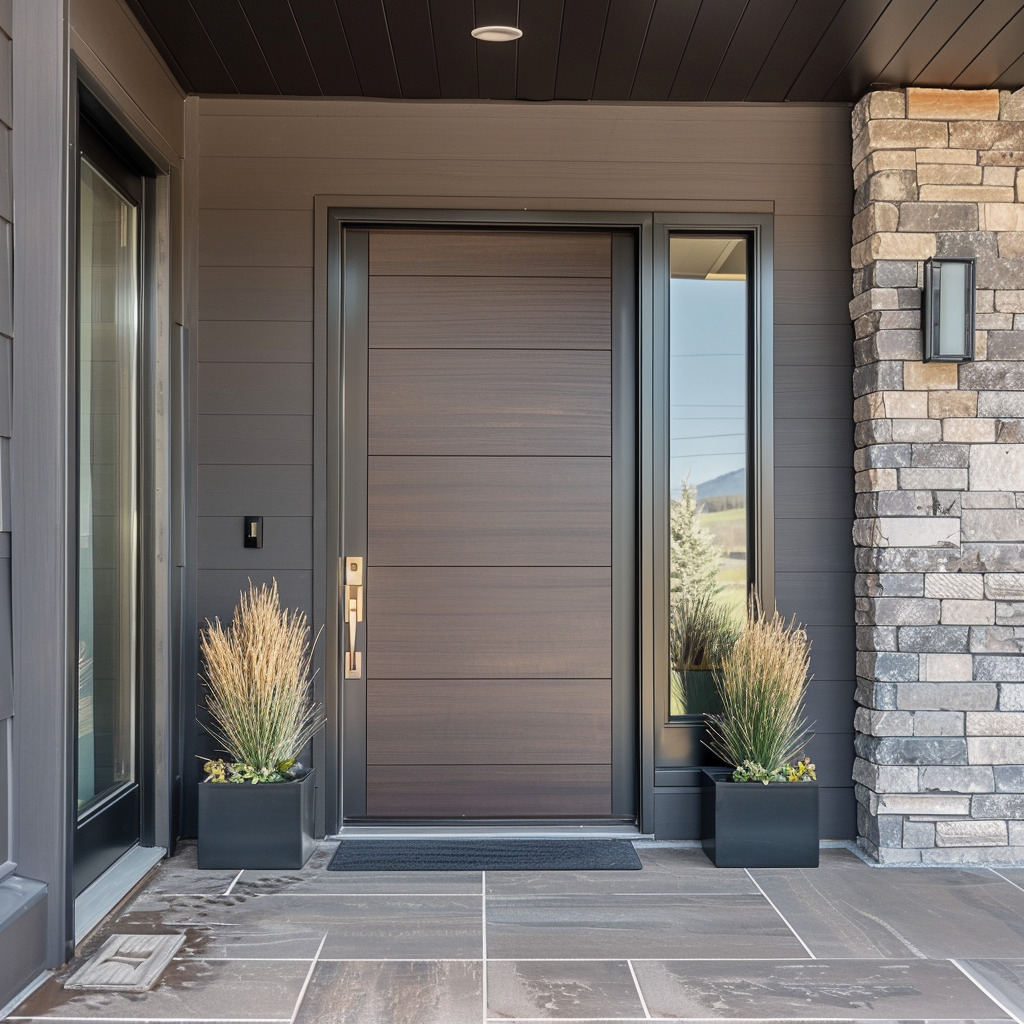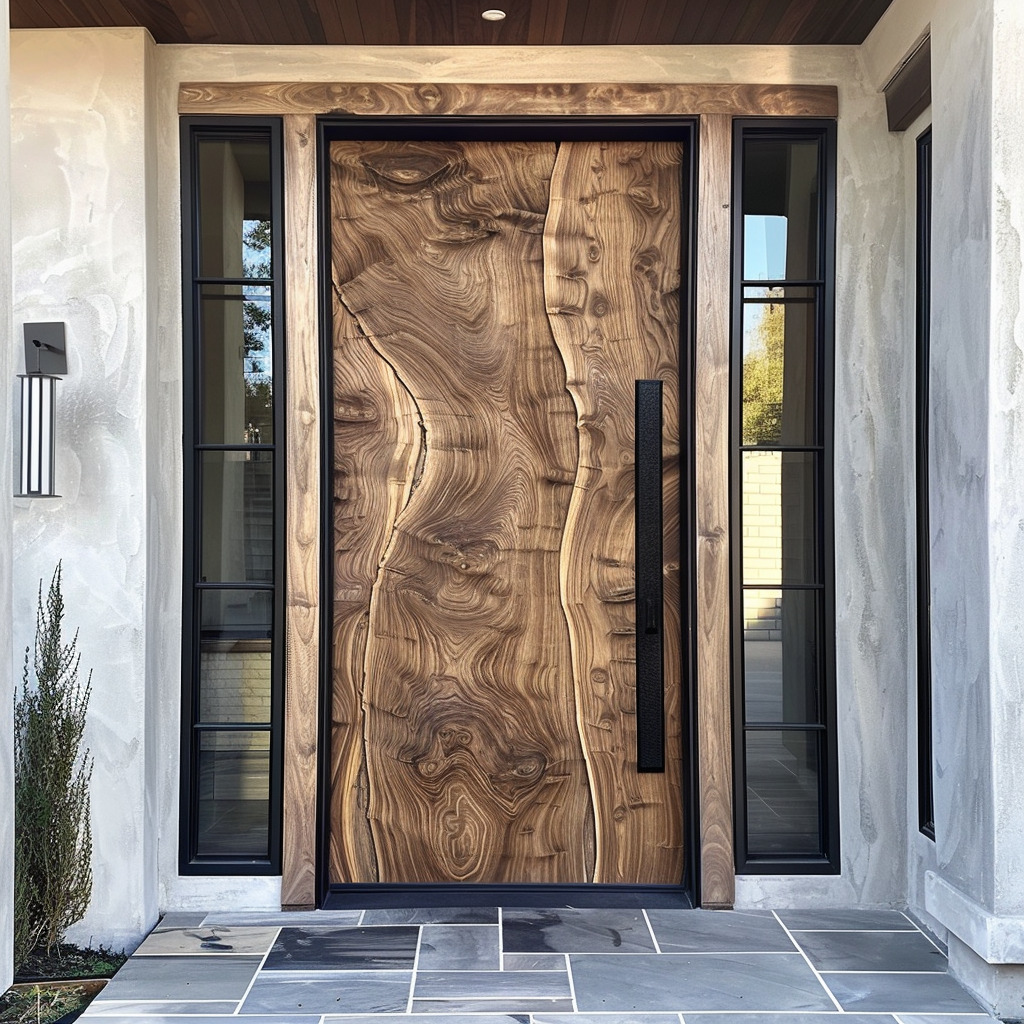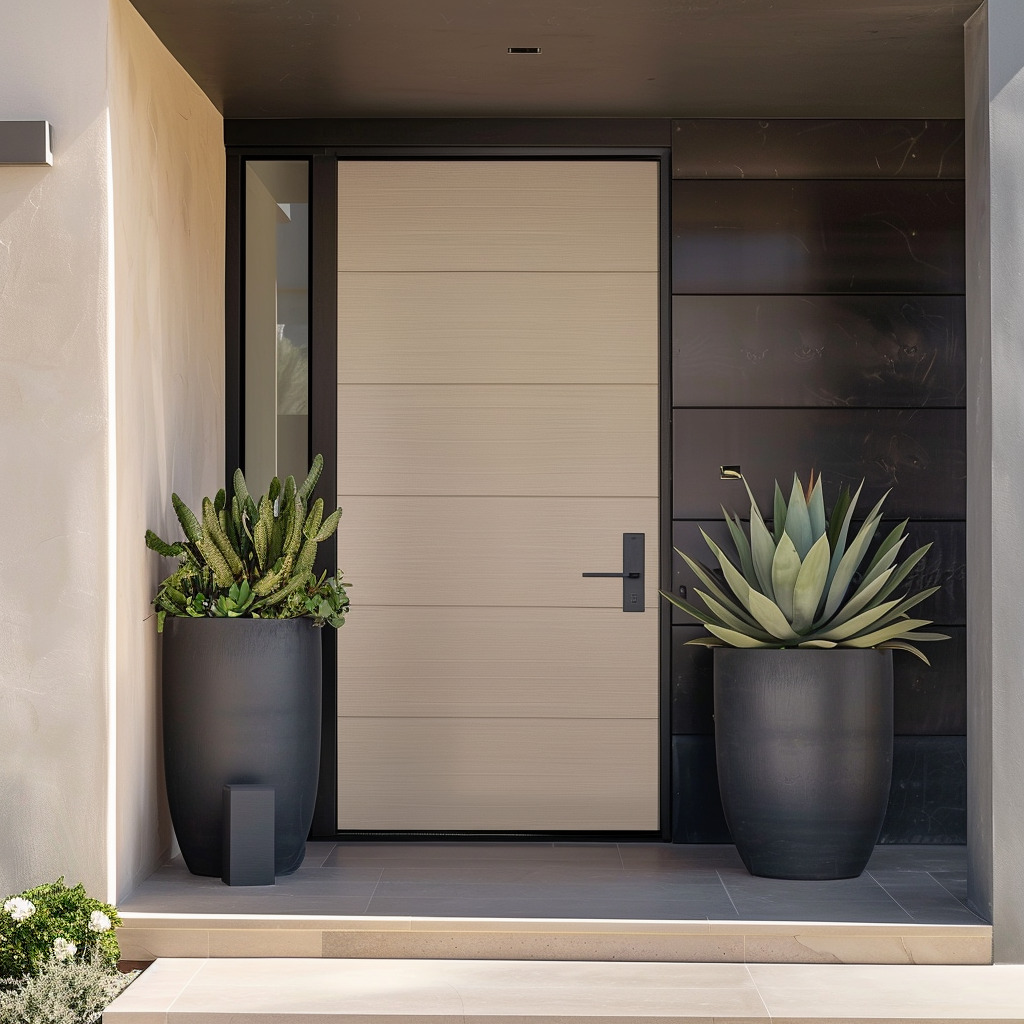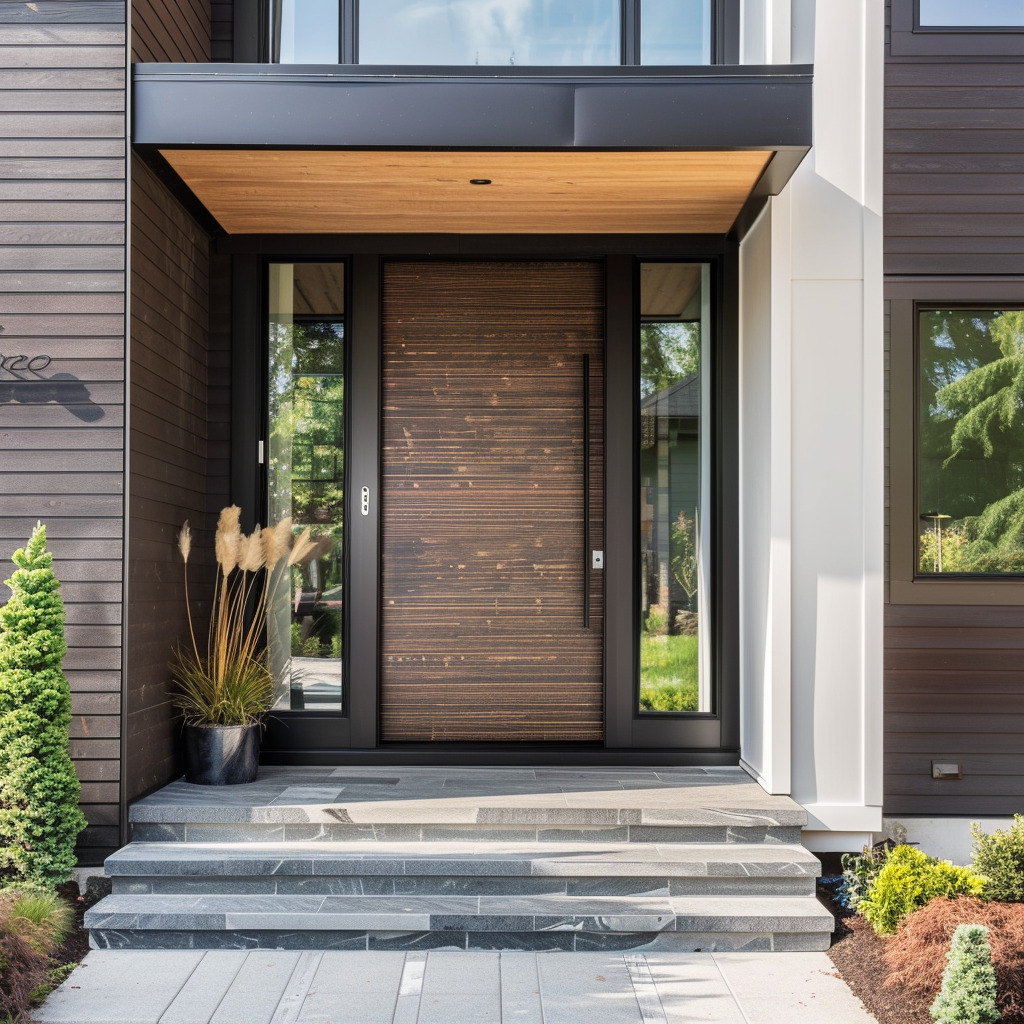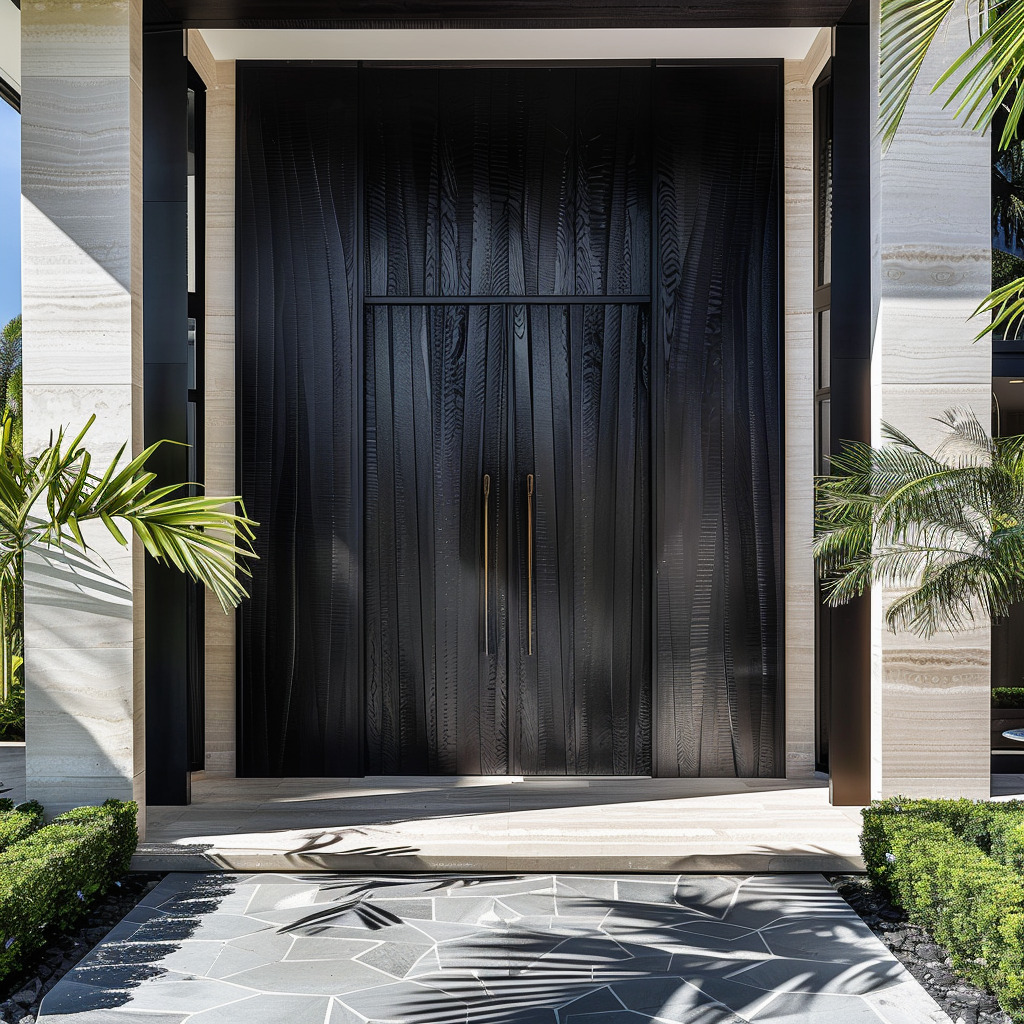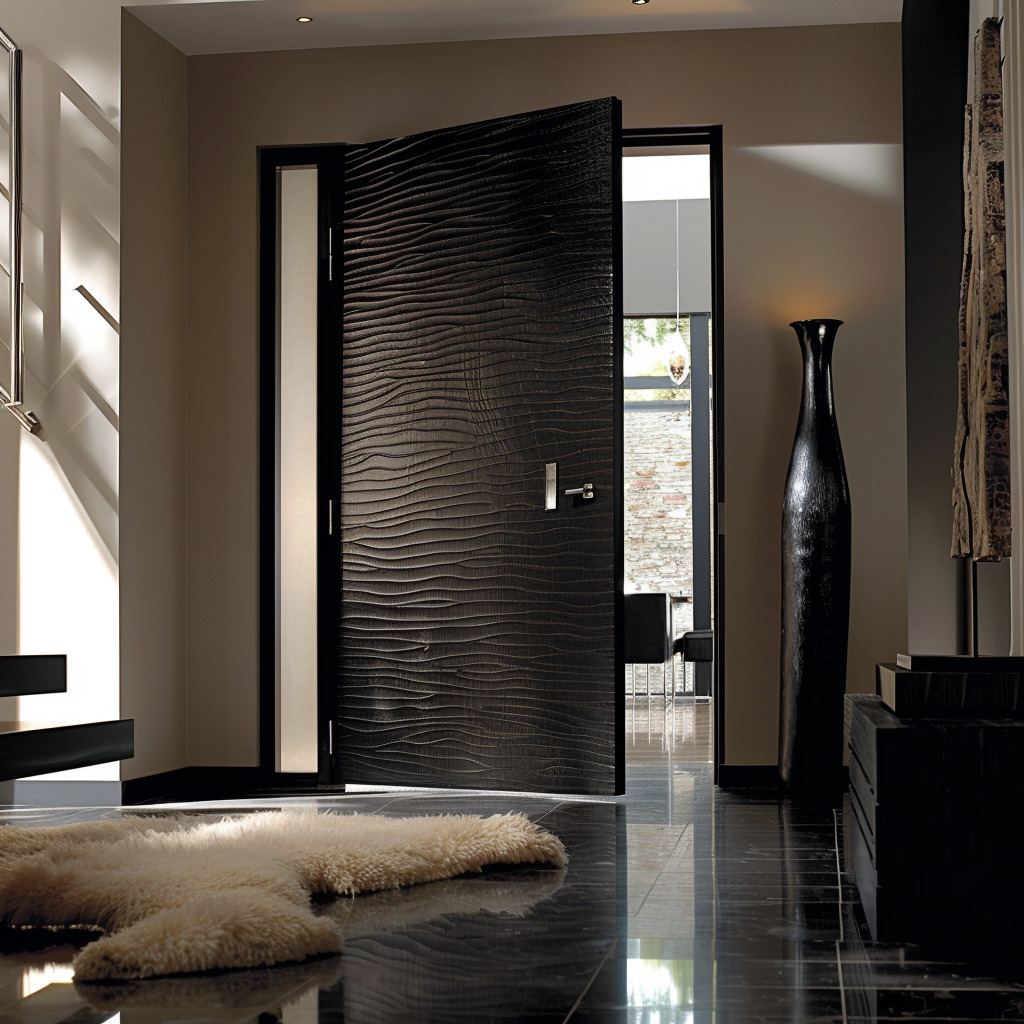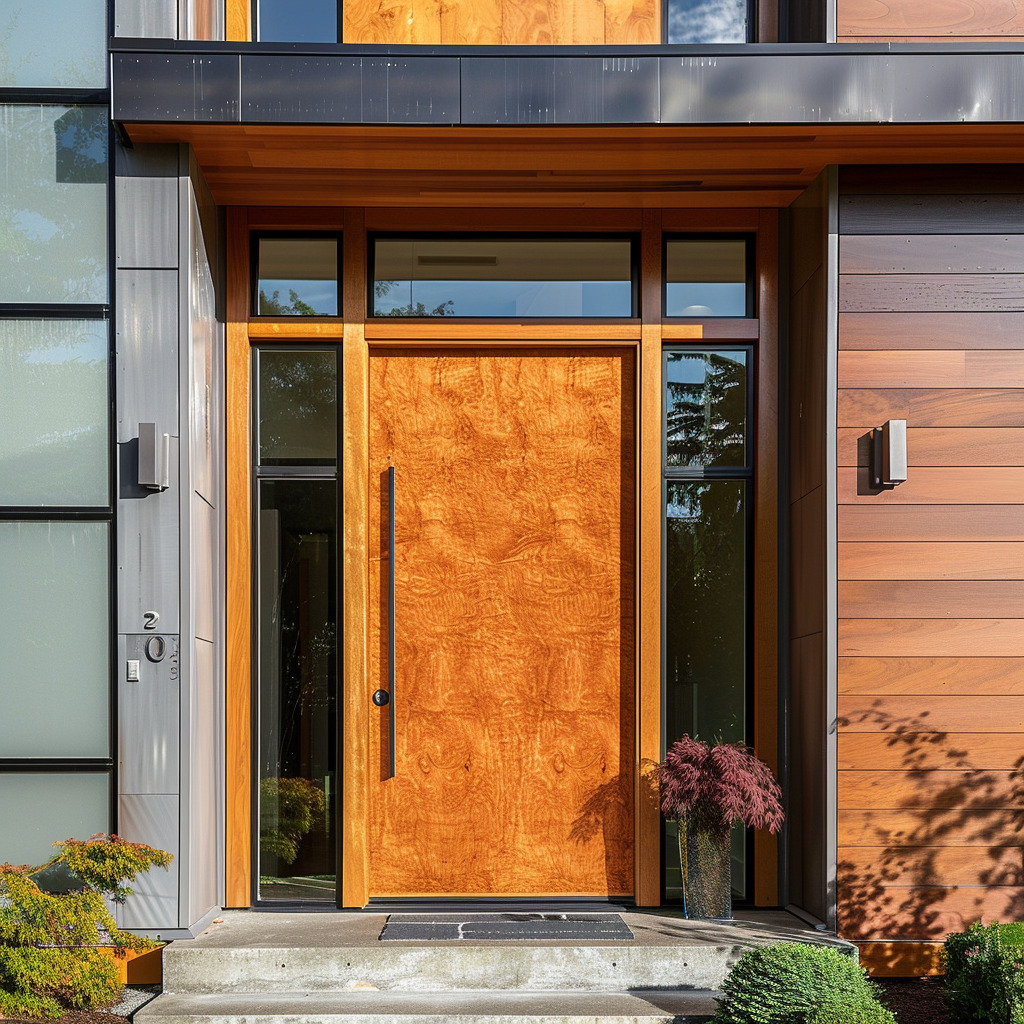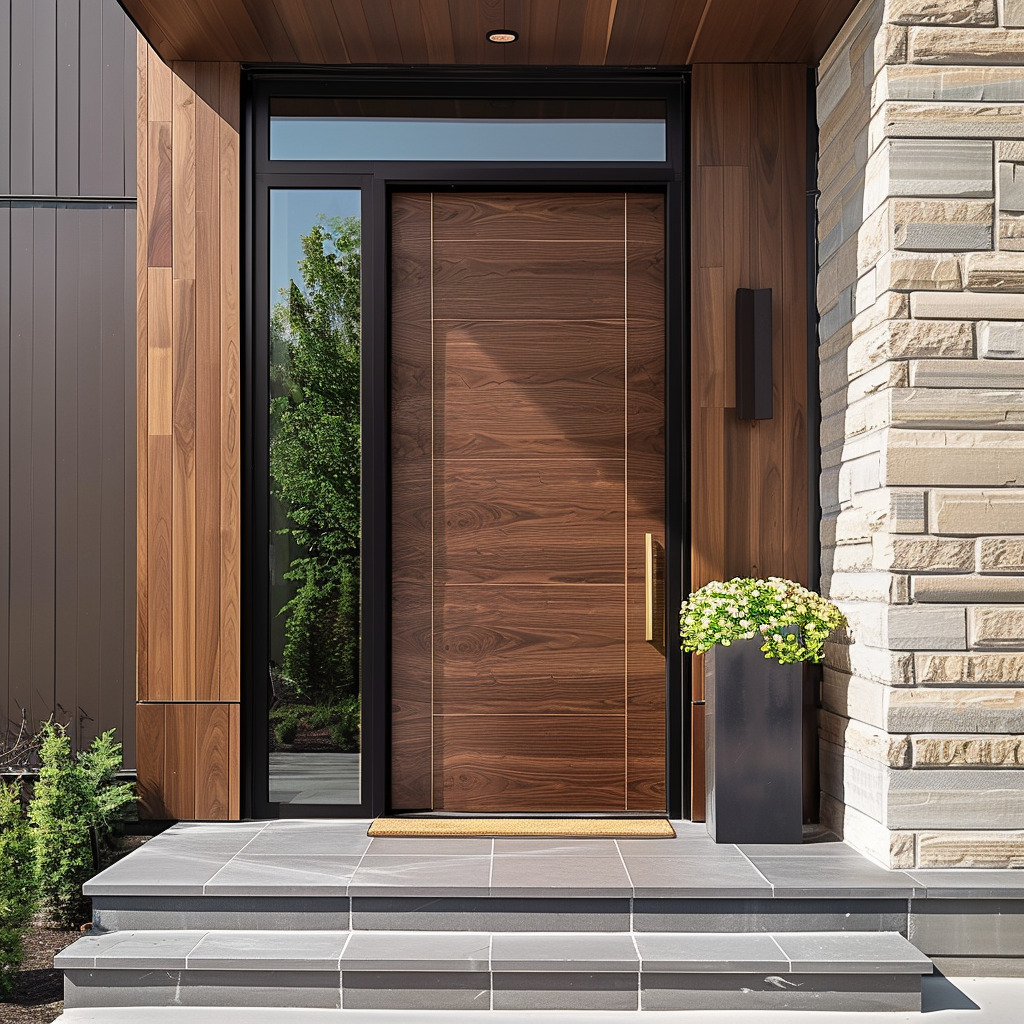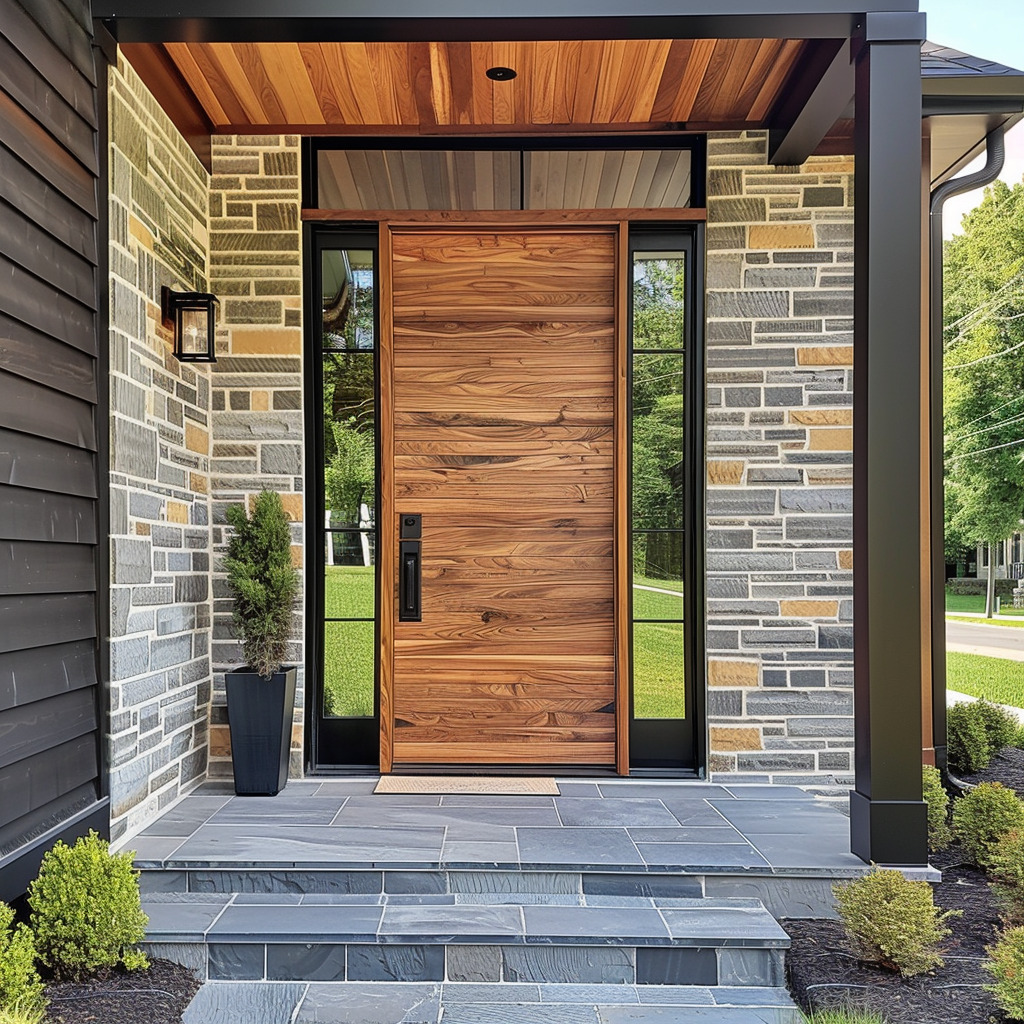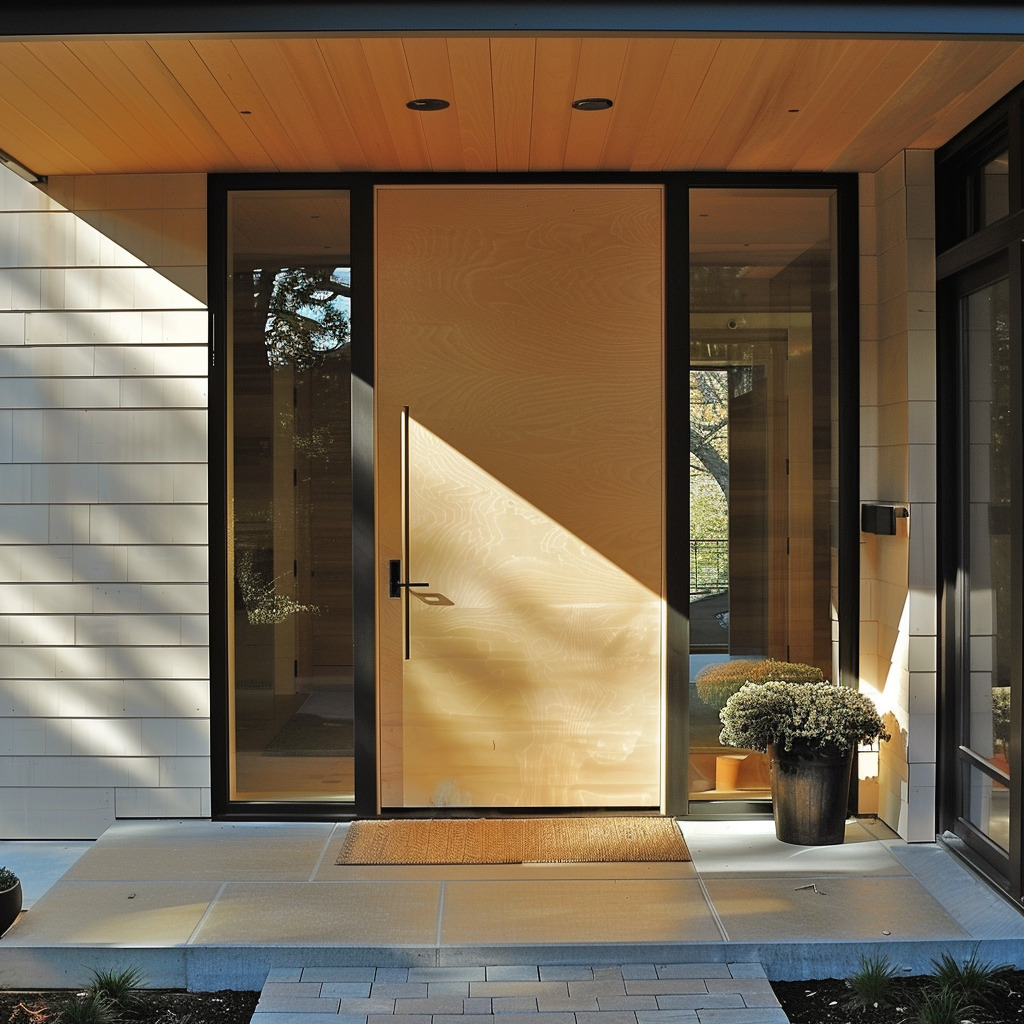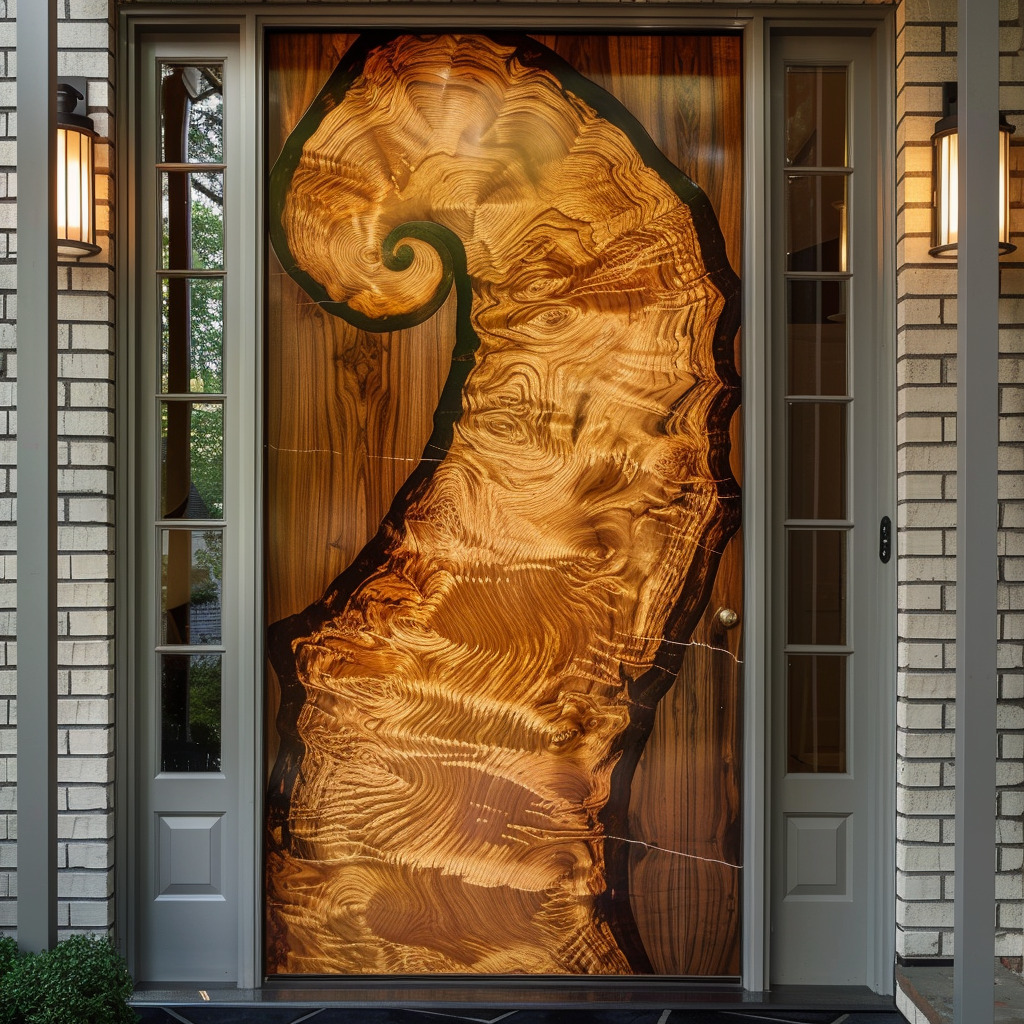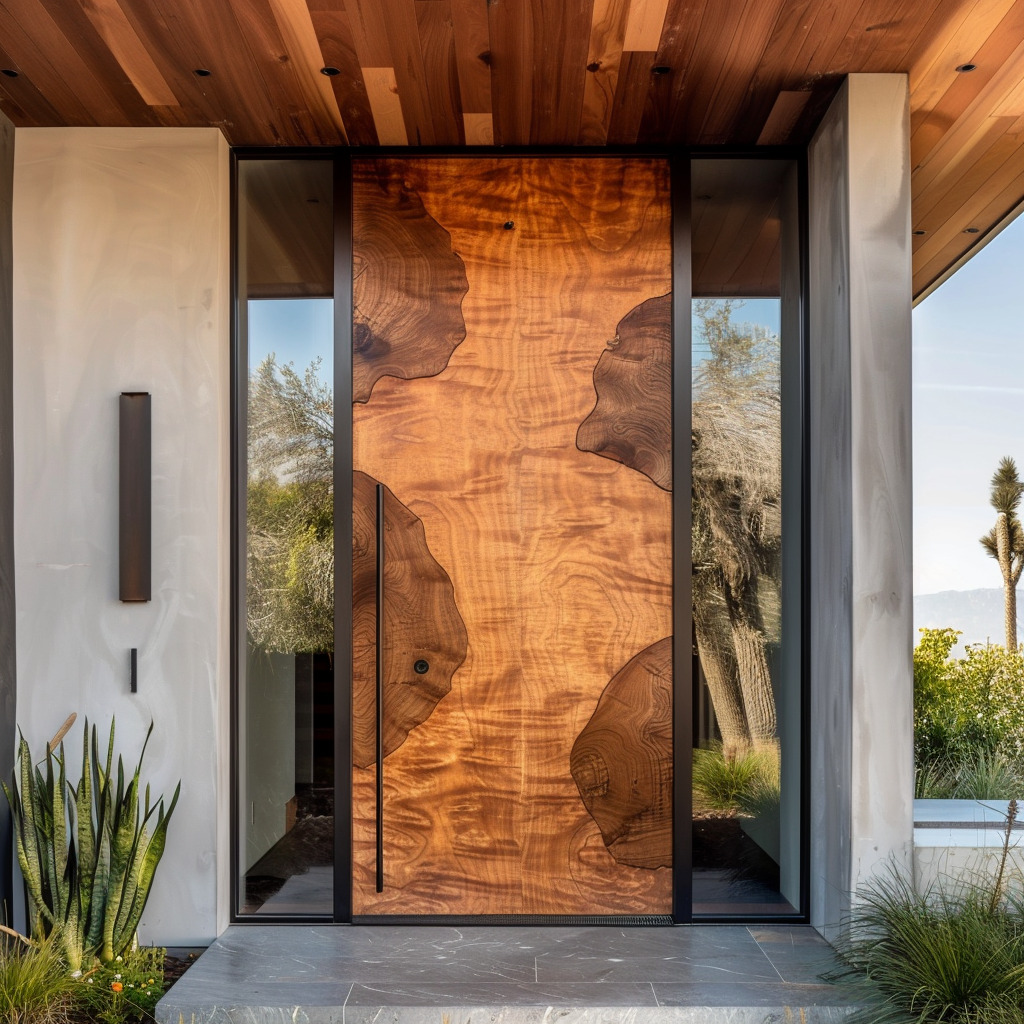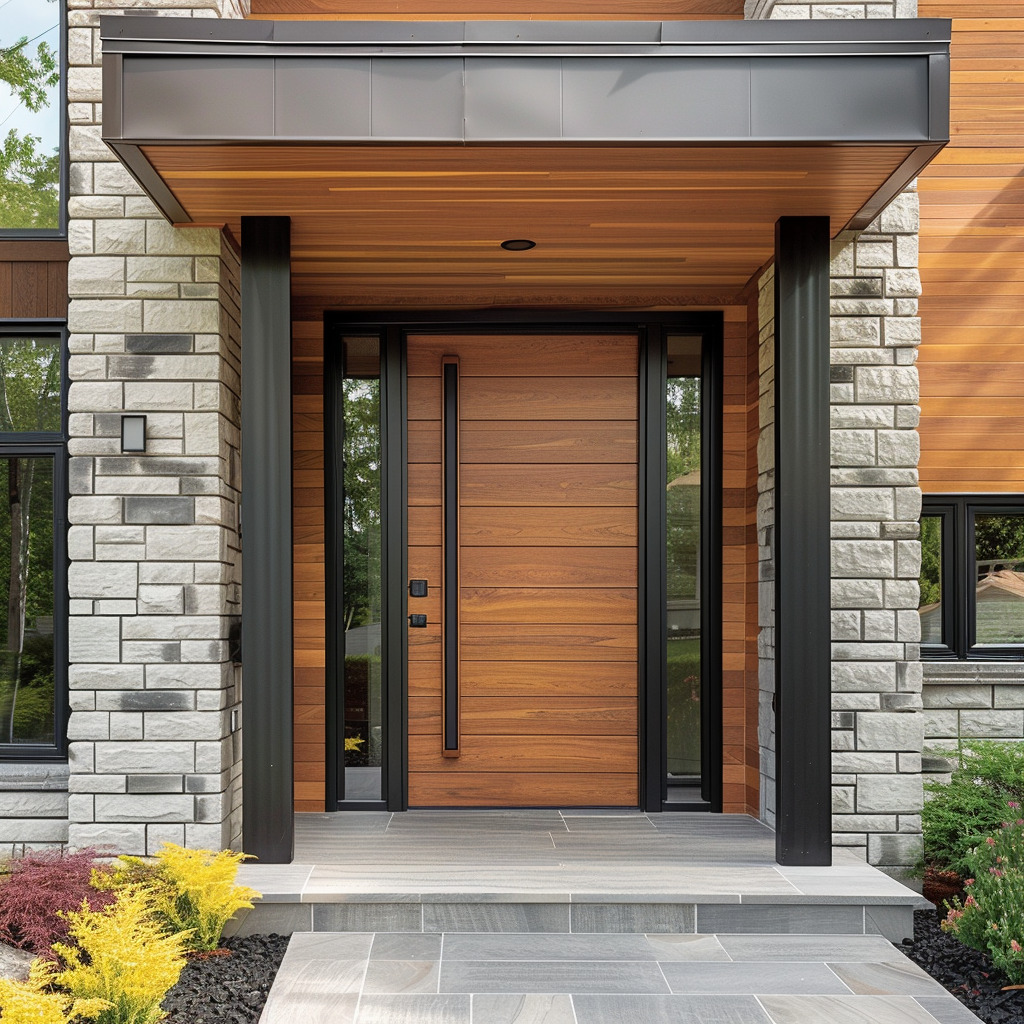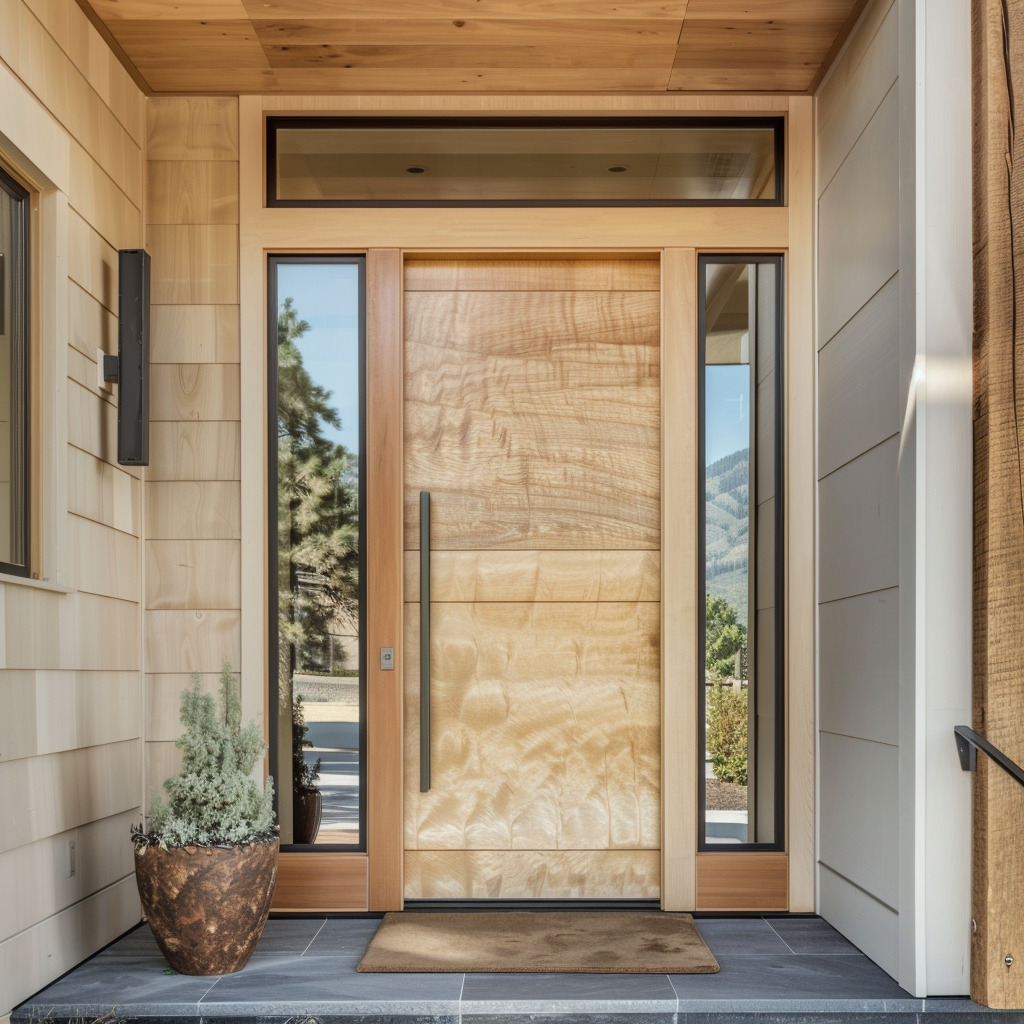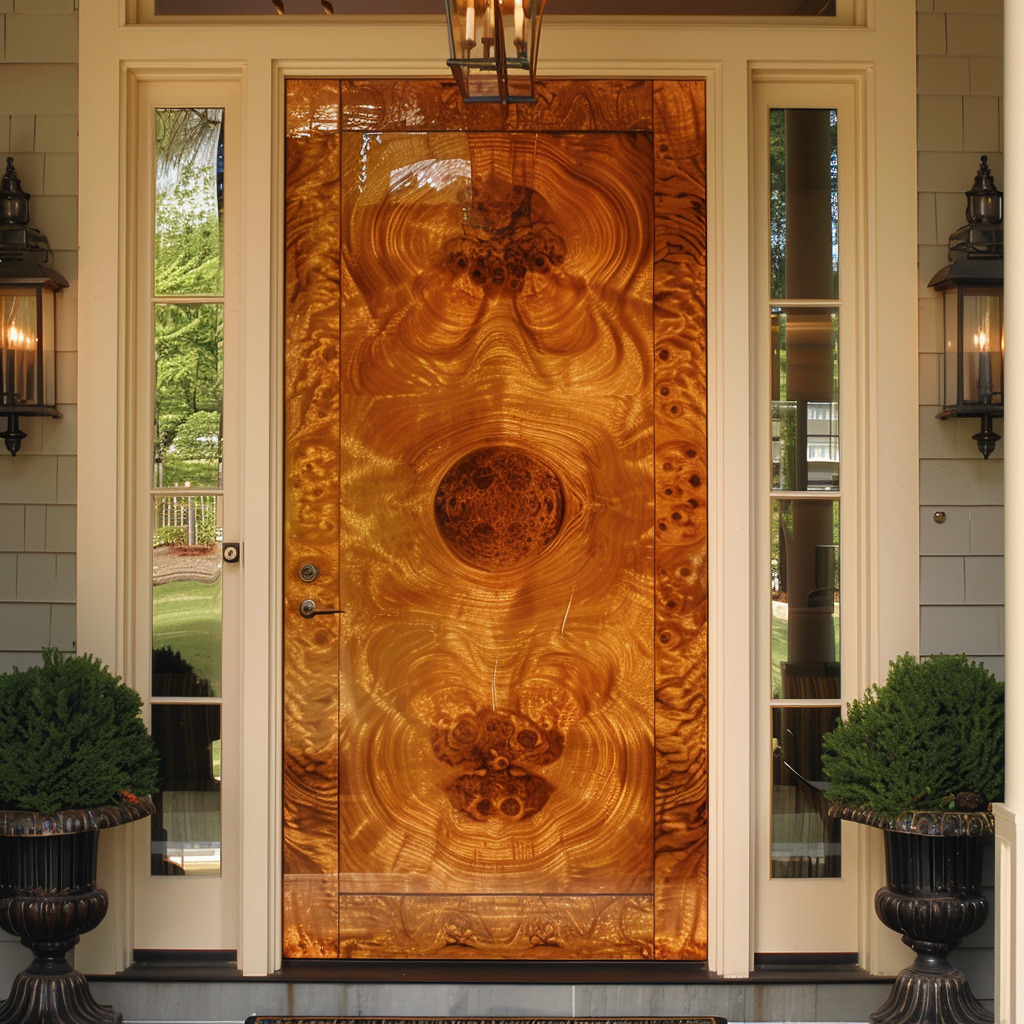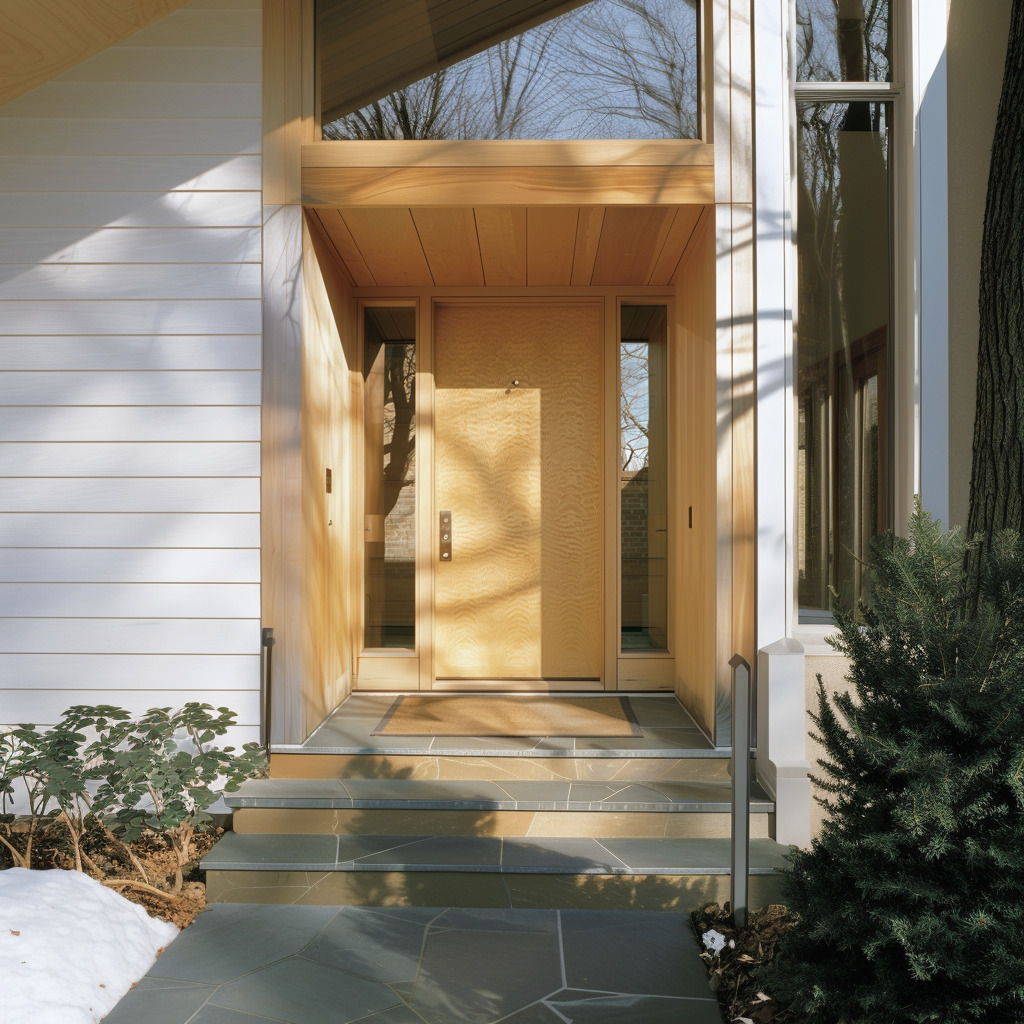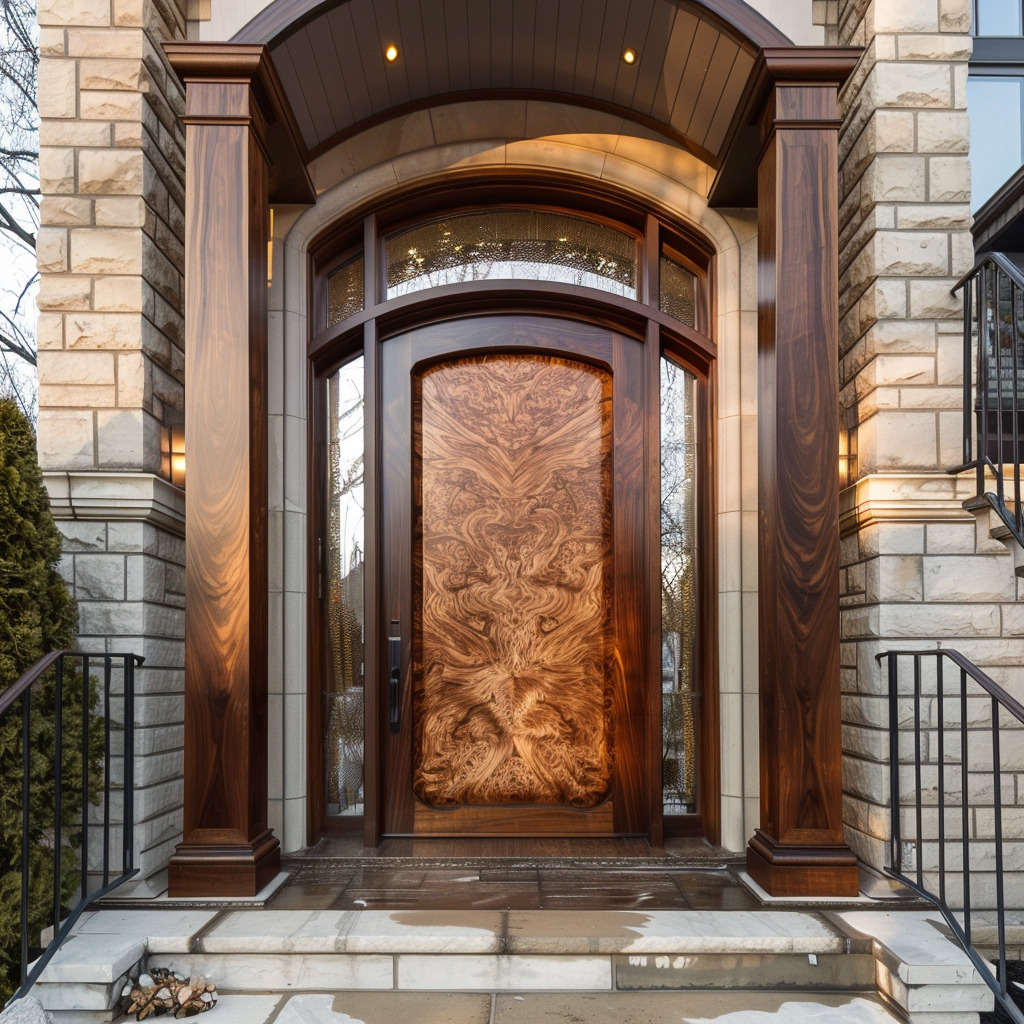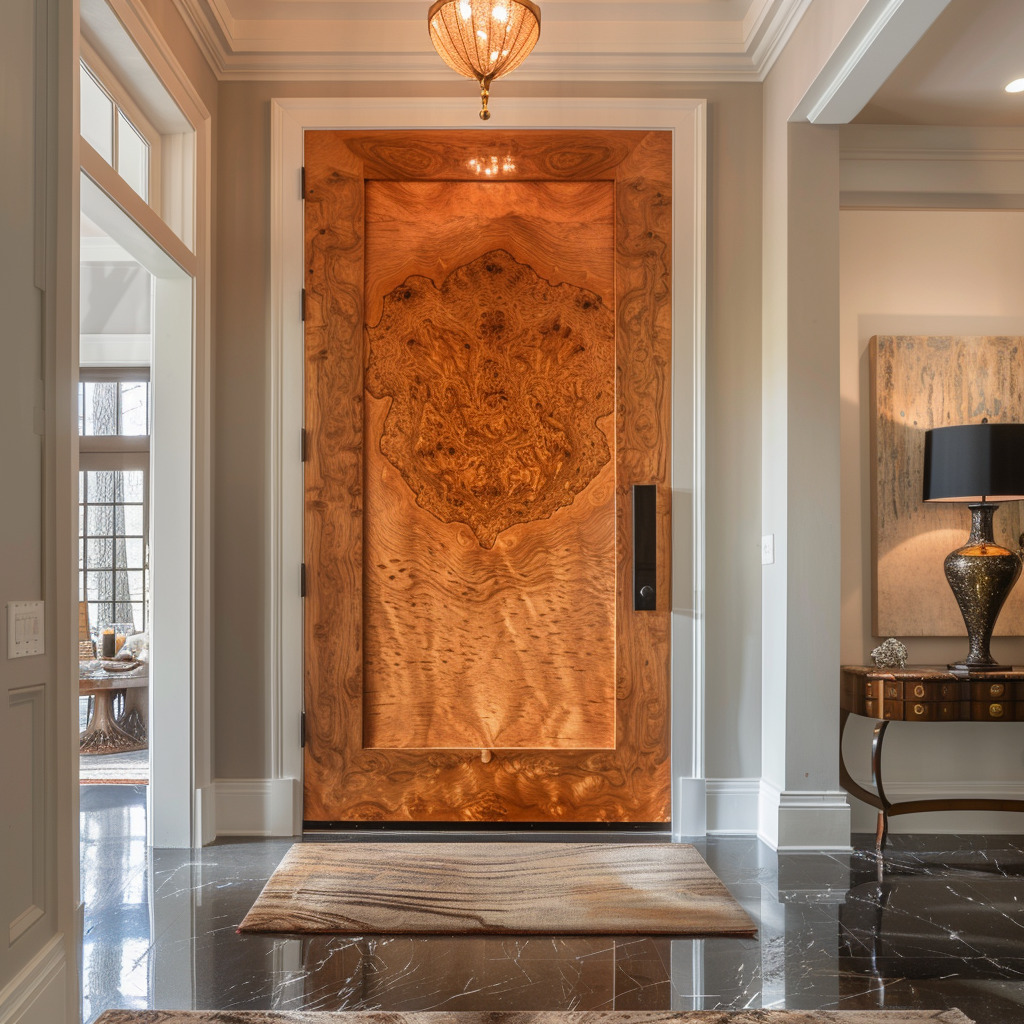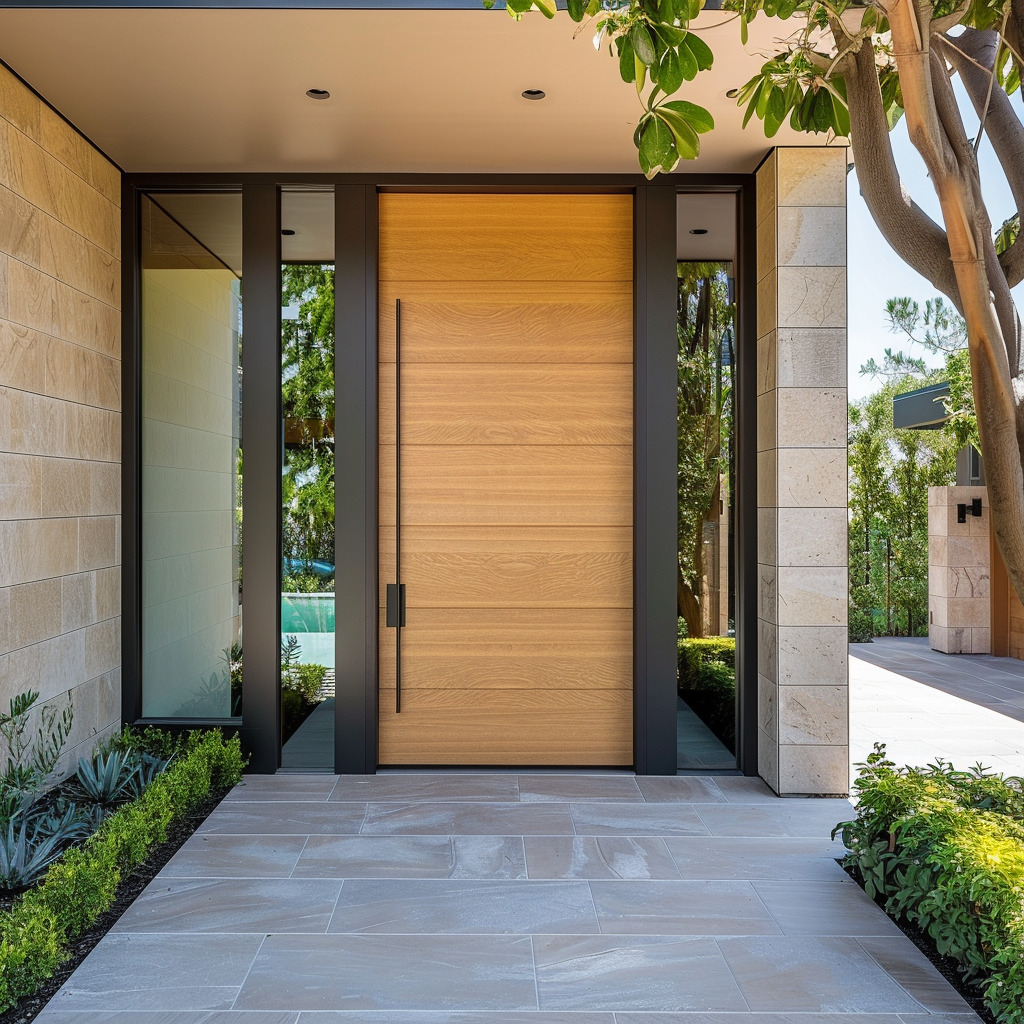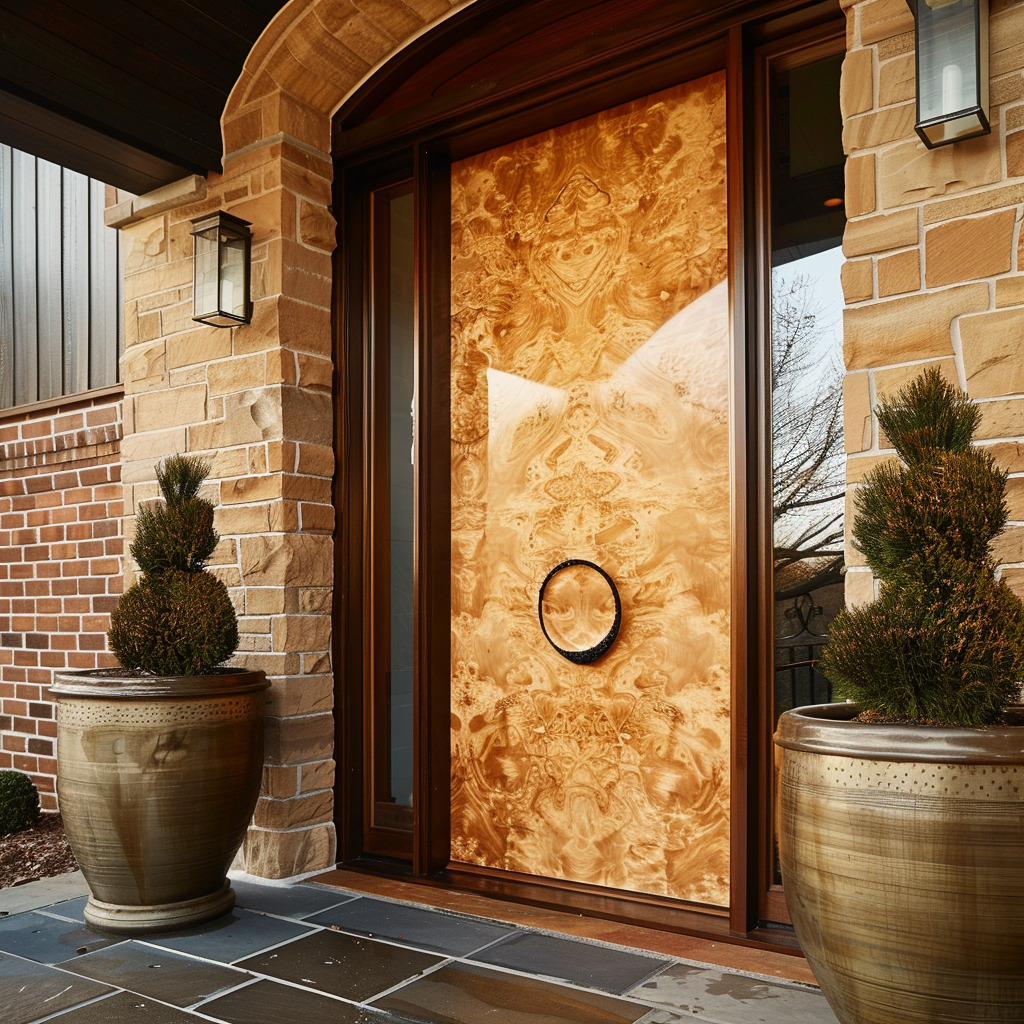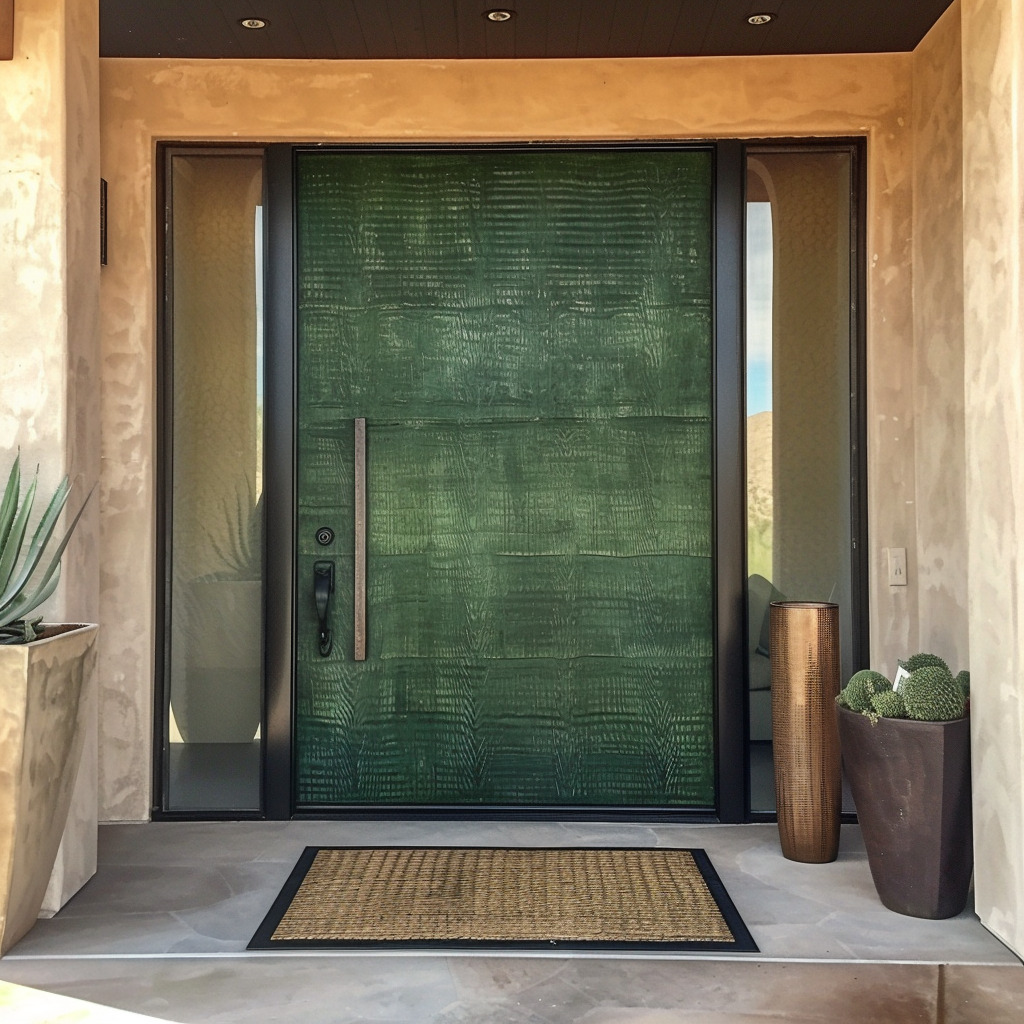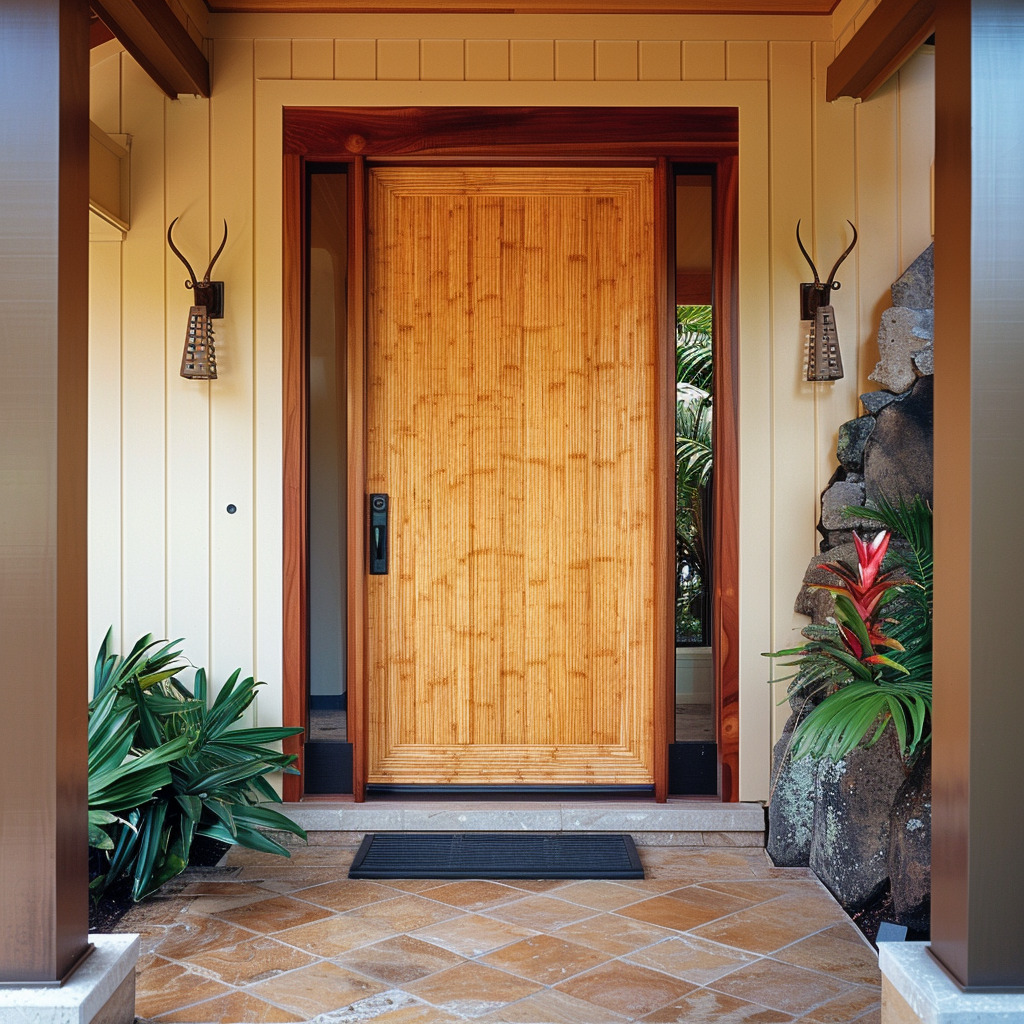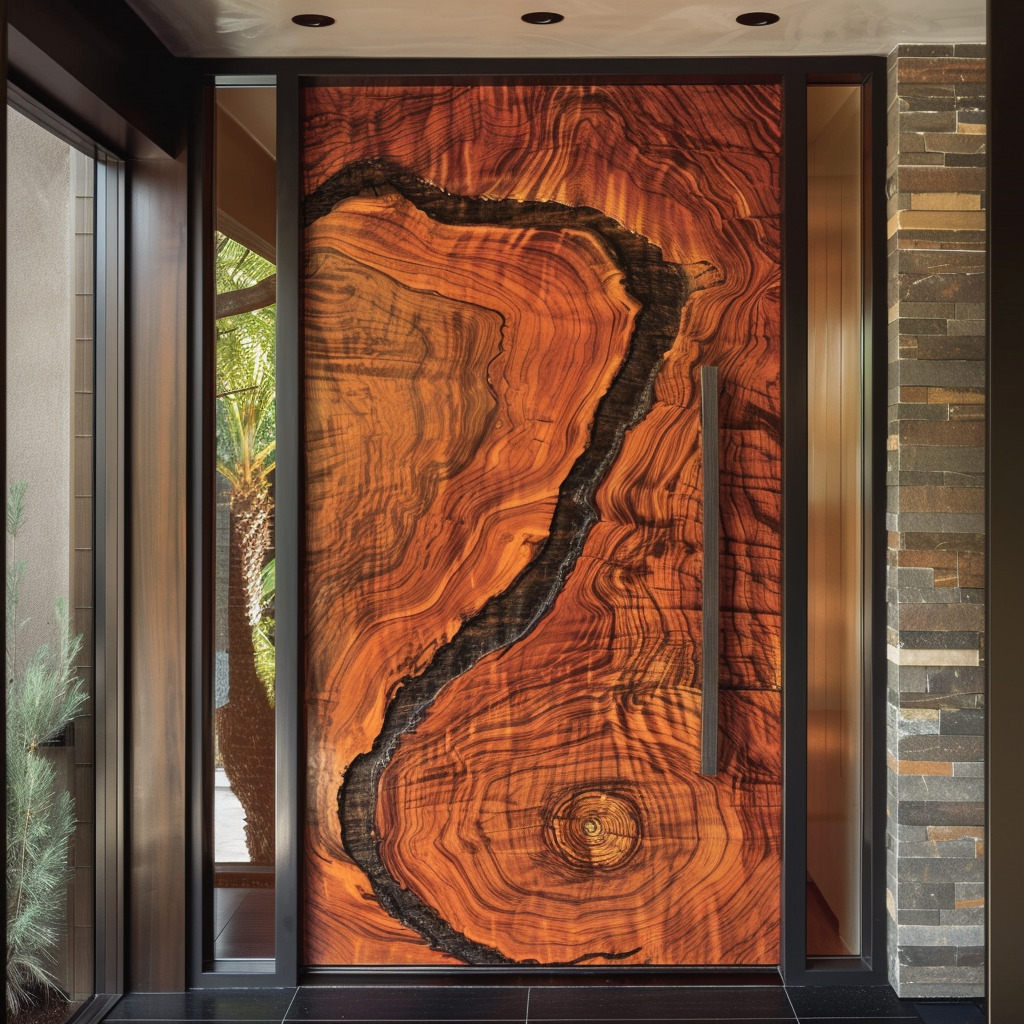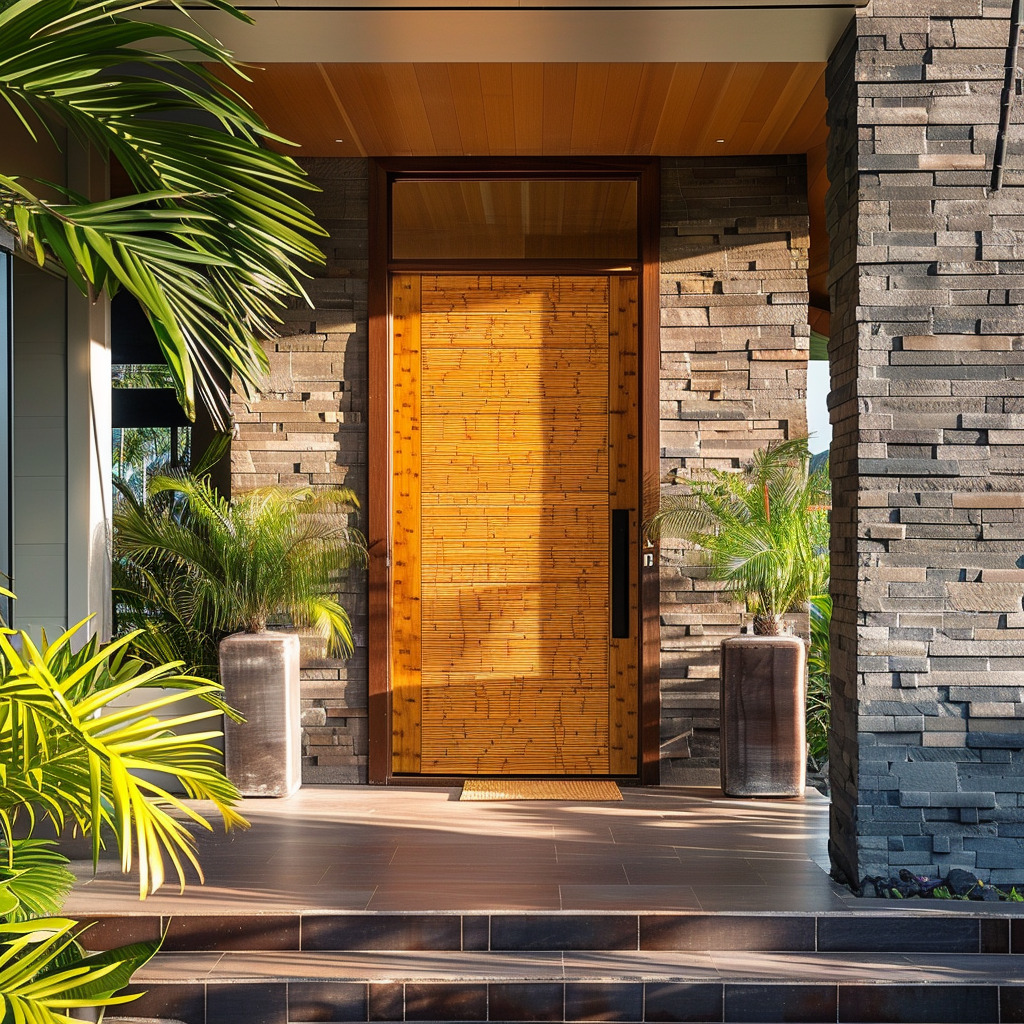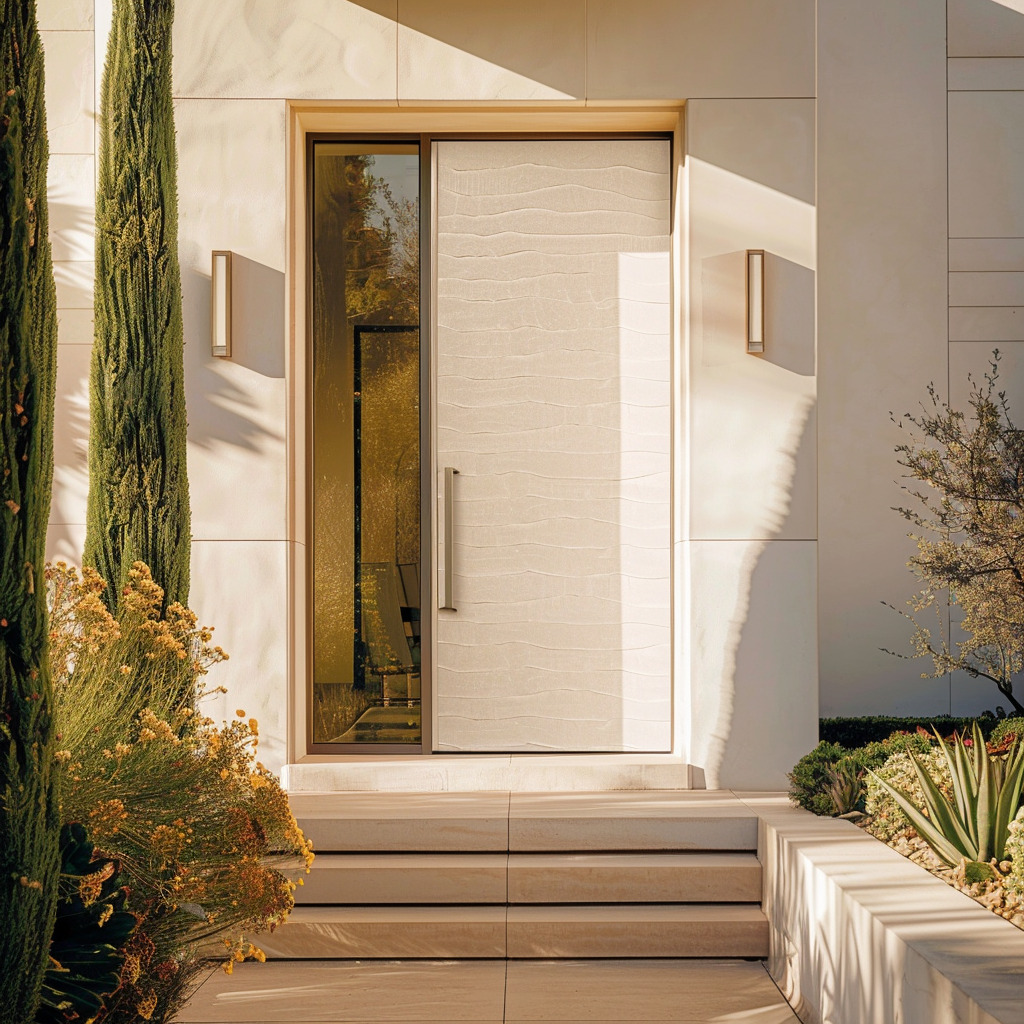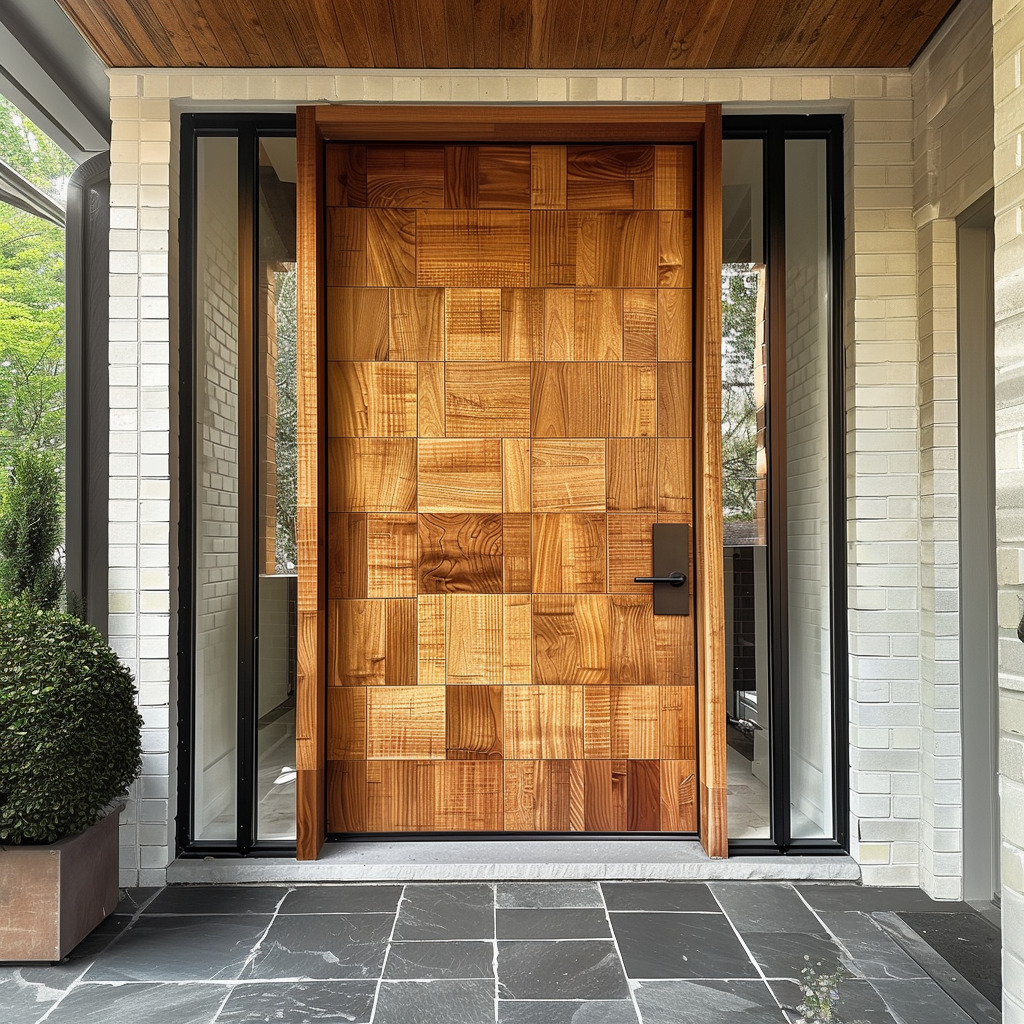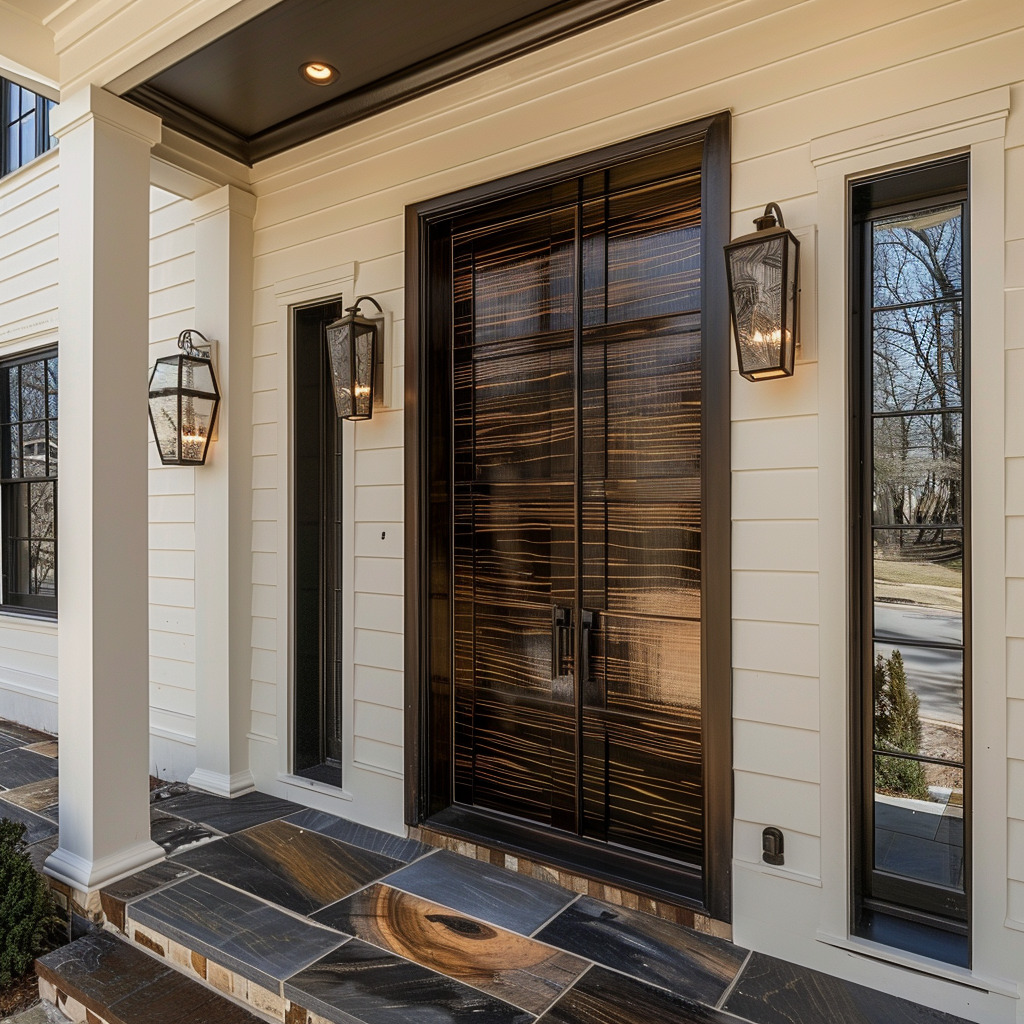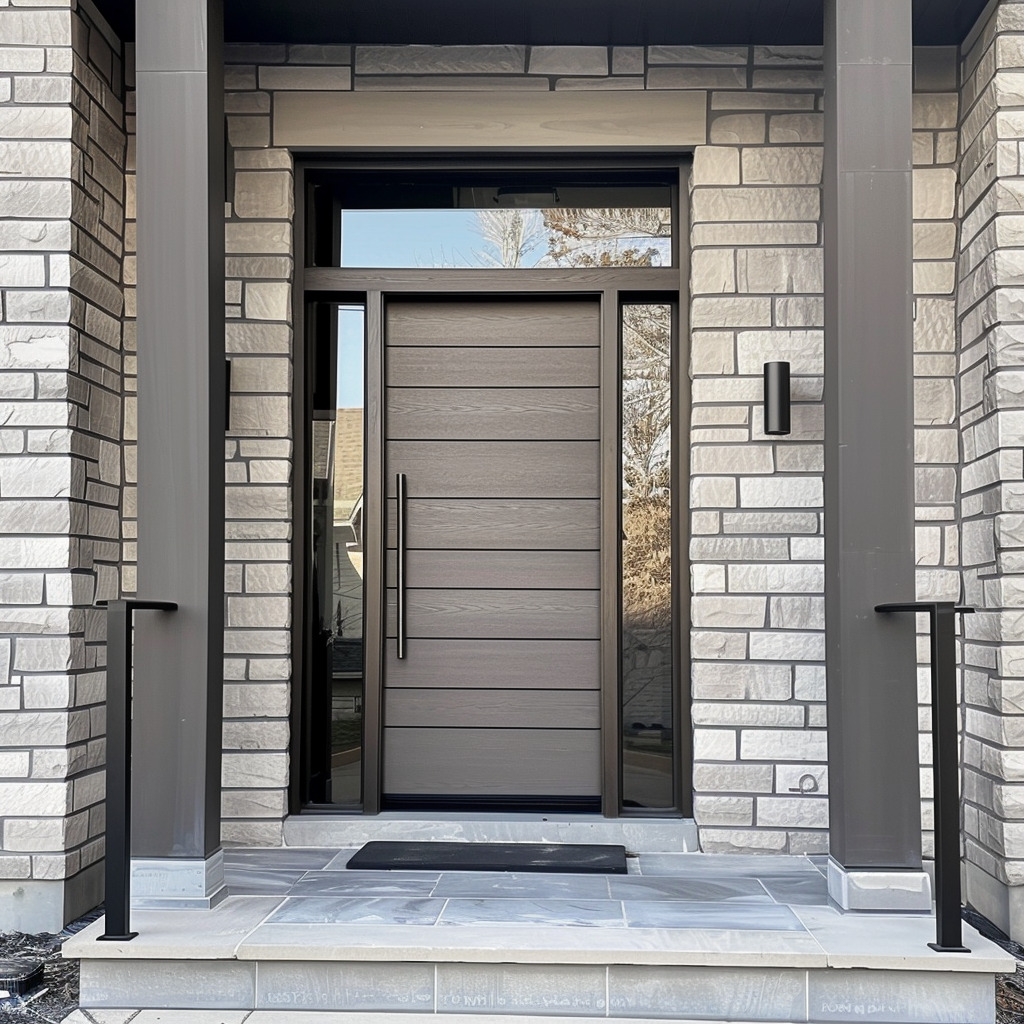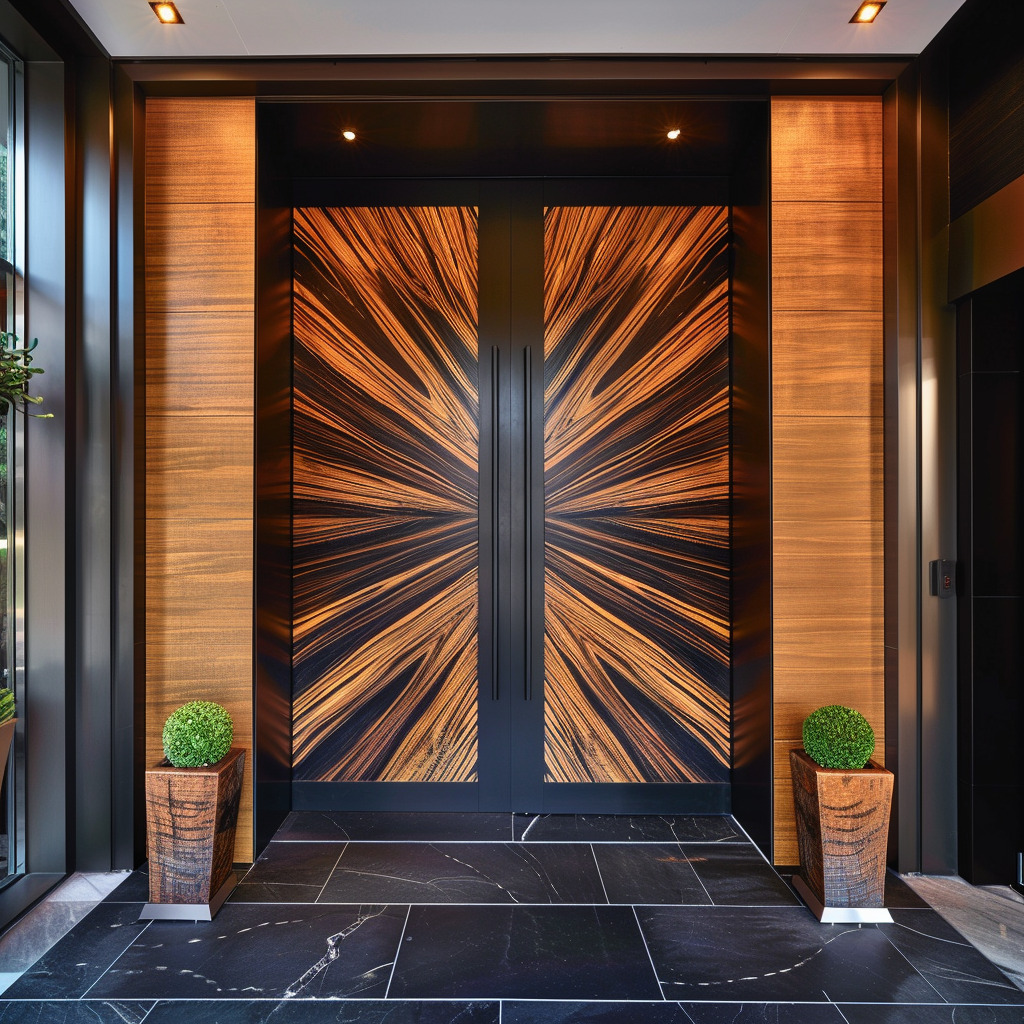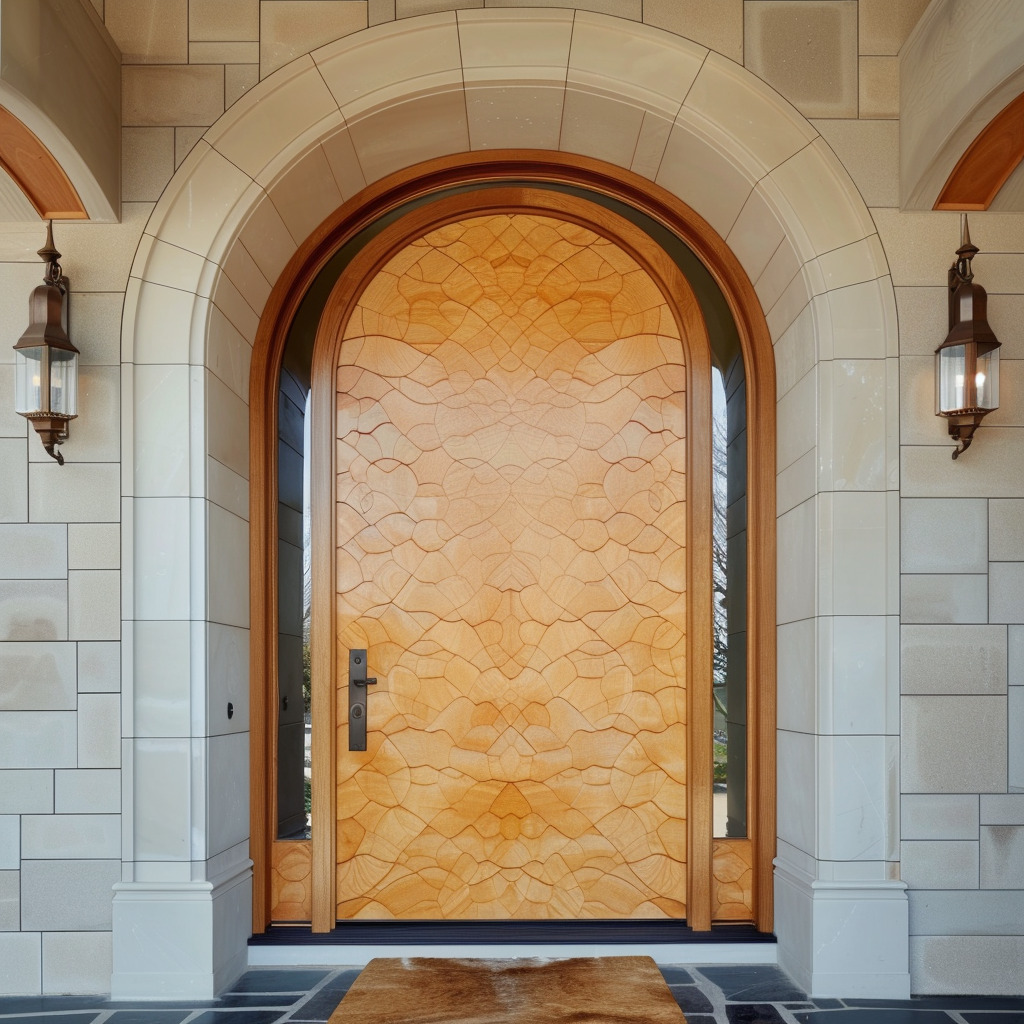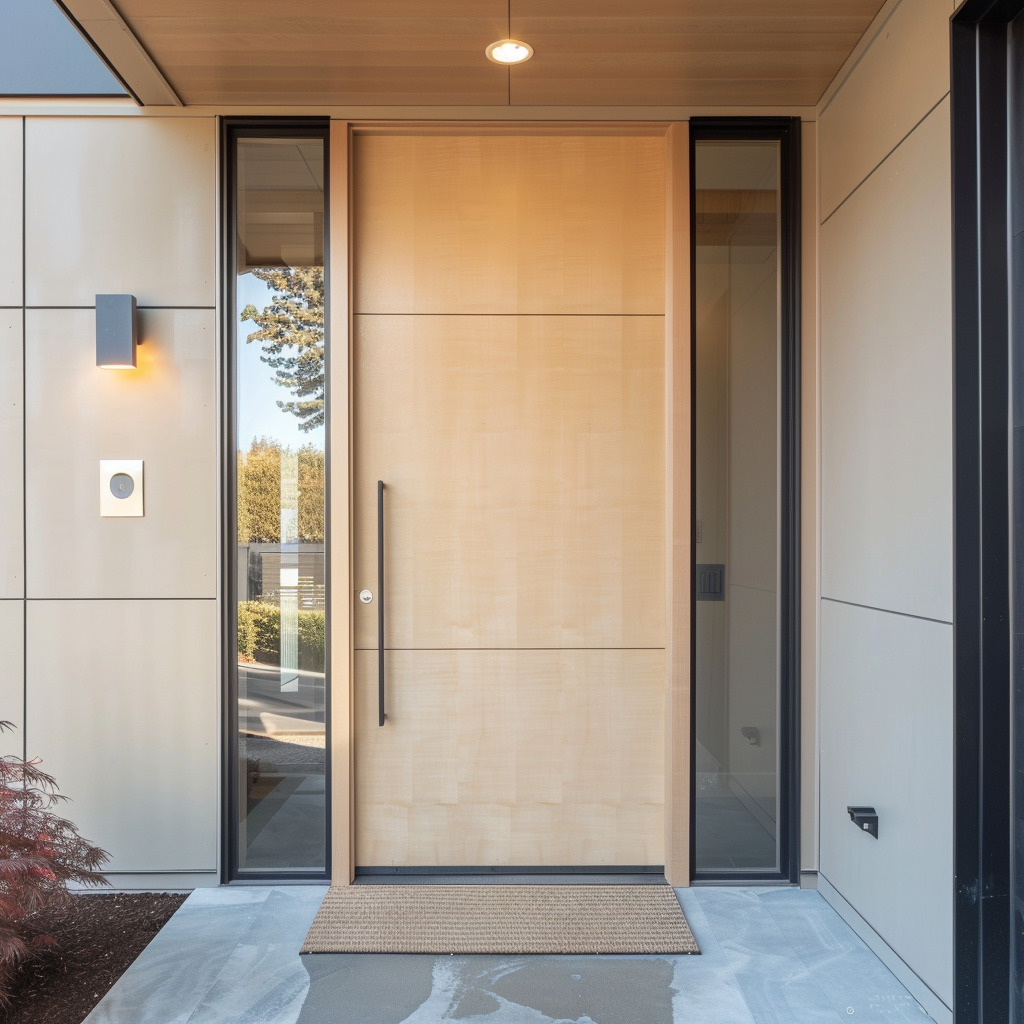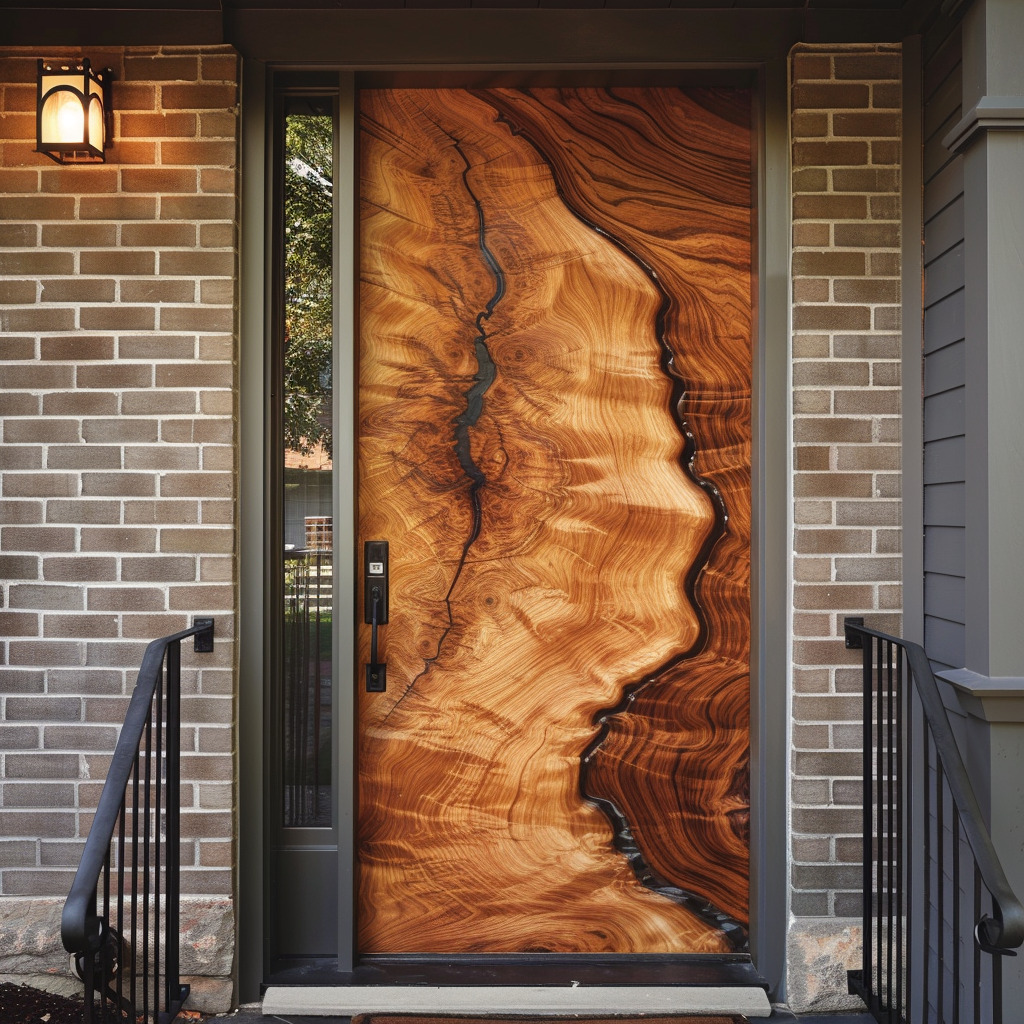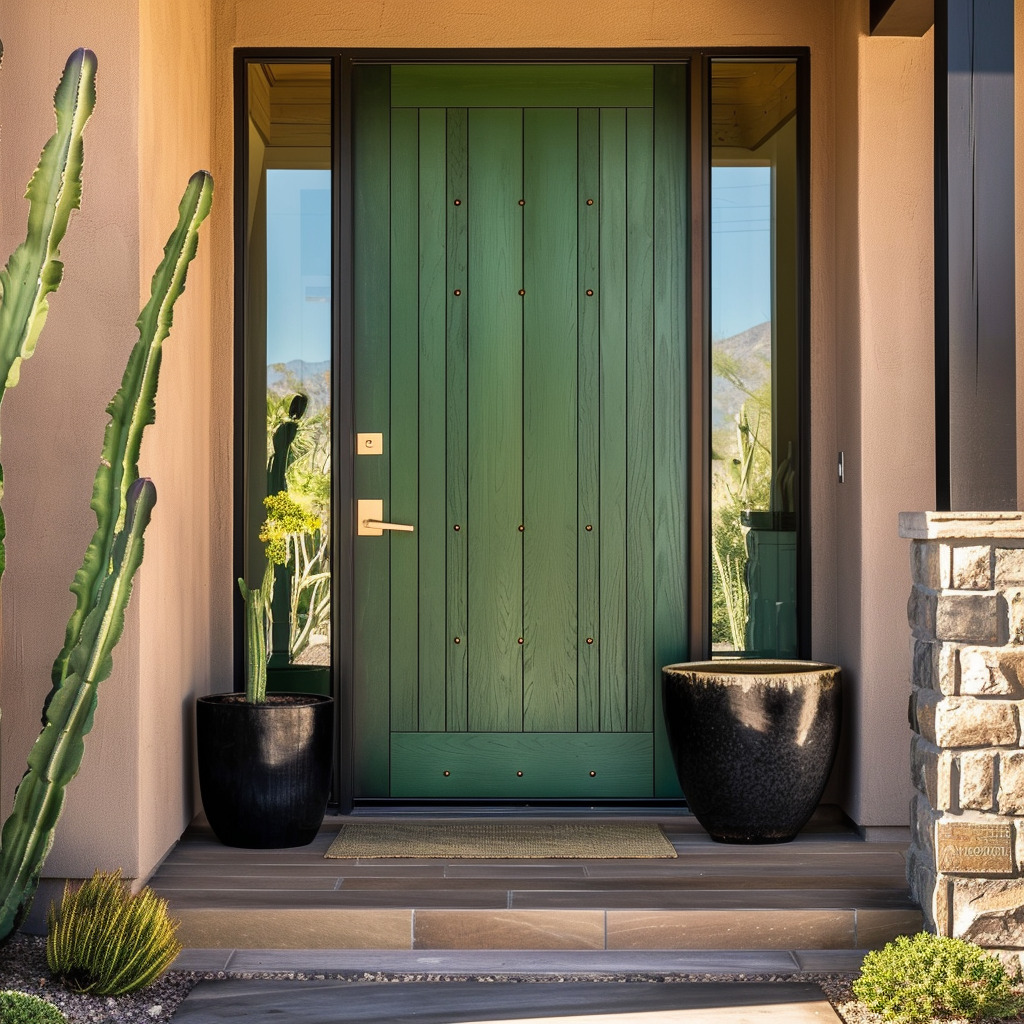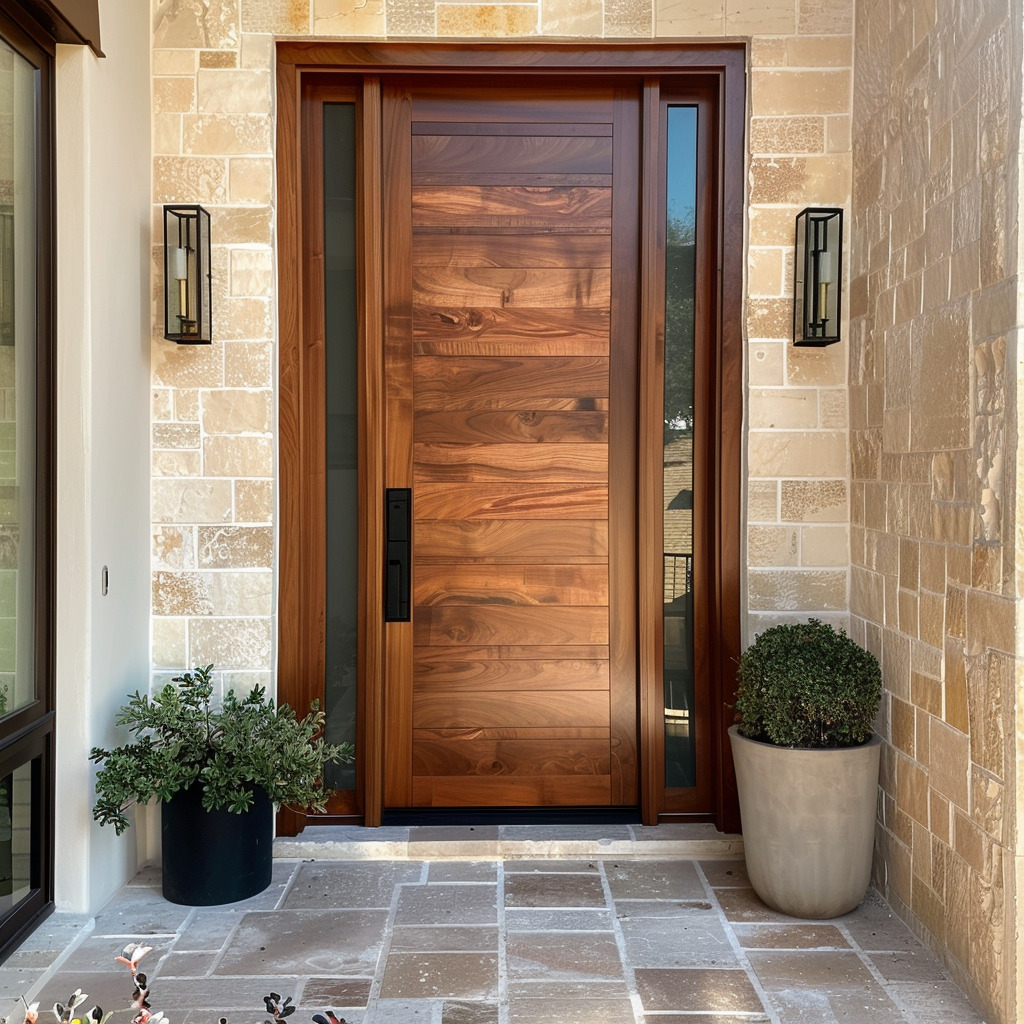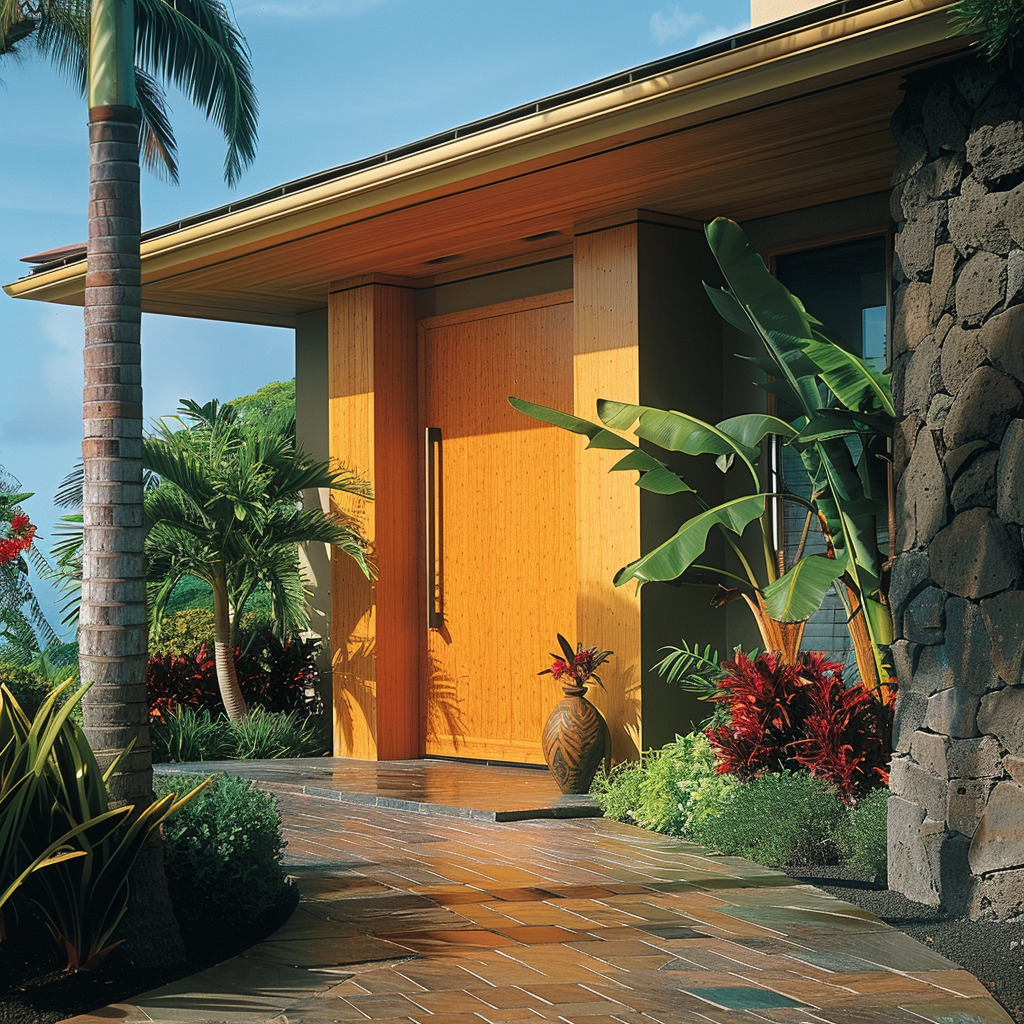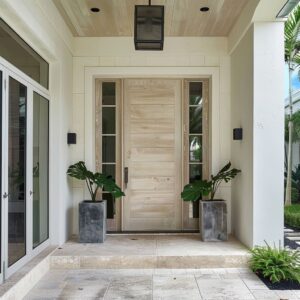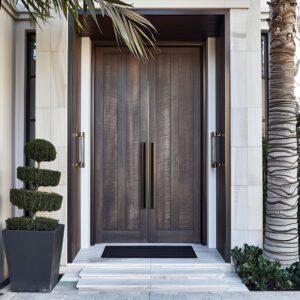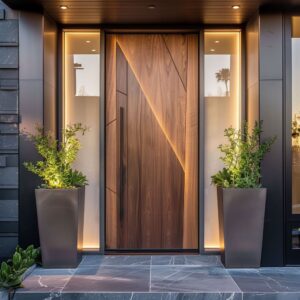Selecting the right wood for an entrance door is crucial, not just for the door’s functionality but also for its visual appeal. An entrance door is the first thing people see when they visit a home, making it a key element in setting the tone for the entire property.
Therefore, homeowners need to choose a wood that combines durability with an attractive appearance. The right wood can enhance the door’s resilience to weather conditions, ensure longevity, and create a stunning focal point that enhances the overall curb appeal. Thesis Statement This article explores the best woods for entrance door designs, focusing on their unique features, aesthetics, and practical benefits.
By understanding the characteristics of various wood types, homeowners can make informed decisions that balance beauty and functionality in their entrance door ideas.
Overview of Wood Veneers
Explanation of Wood Veneers
Wood veneers are thin slices of wood that are glued onto core panels, such as doors, to produce flat panels with a wood-like appearance. These veneers are crafted from high-quality logs and are available in various species, each offering distinct grain patterns and colors.
Veneers allow for the use of beautiful wood surfaces while conserving the amount of wood used, making them both economical and environmentally friendly. They are a popular choice for entrance doors because they provide the aesthetic appeal of solid wood while being more stable and resistant to warping and splitting.
Importance of Quality Veneers
Using high-quality veneers is essential in creating durable and visually appealing entrance doors. For example, veneers from Tabu brand are known for their superior craftsmanship and innovative designs.
High-quality veneers ensure that the entrance door not only looks stunning but also stands up to the elements and daily wear. These veneers offer a variety of wood front door ideas that cater to different tastes and styles, ensuring that every homeowner can find a design that fits their aesthetic preferences.
Dyed Veneers
Dyed veneers undergo a process where natural wood is infused with dye to enhance its color and grain patterns. This process involves vacuum pressure that allows the dye to penetrate deeply into the wood fibers, ensuring the color is uniform throughout the veneer.
The result is a vibrant and consistent appearance that highlights the natural beauty of the wood while providing a wide range of color options.
Characteristics and Benefits
Color Consistency: One of the main advantages of dyed veneers is their uniform color. Because the dye penetrates deeply into the wood, the color remains consistent even if the veneer is sanded or cut.
This makes dyed veneers an excellent choice for single wooden front door designs for houses where a flawless finish is desired.
Vibrant Options: Dyed veneers are available in a wide range of hues, from bold and dramatic to subtle and understated. This variety allows homeowners to select a veneer that perfectly matches their personal style and the overall design of their home.
Examples of Dyed Veneers
Walnut Veneer: Walnut veneers are known for their deep, rich brown color and subtle swirling grain patterns. The dyed walnut veneer enhances these natural features, creating a luxurious and timeless look.
- Mahogany Veneer: Dyed mahogany veneer showcases a deep reddish-brown color that exudes warmth and elegance.
Its luxurious finish makes it a popular choice for main entrance wood door design.
This veneer offers a contemporary look that is both elegant and understated, making it perfect for modern entrance door ideas.
Natural Veneers
Natural veneers are prized for their ability to showcase the inherent beauty of wood. Each piece is unique, reflecting the natural variations in color and grain that are characteristic of the specific wood species.
These veneers highlight the wood’s authenticity and provide a timeless appeal, making them a favorite choice for homeowners looking to enhance the visual appeal of their entrance doors. Natural veneers are an excellent option for wood entrance doors, offering a blend of beauty and durability.
Unique Patterns: One of the most compelling aspects of natural veneers is the uniqueness of each sheet. The grain patterns, colors, and textures vary from piece to piece, ensuring that no two veneers are exactly alike.
This individuality adds character and charm to wooden front door ideas, making each door a distinct work of art.
Authentic Look: Natural veneers preserve the wood’s original characteristics, providing a look that is both natural and timeless. They capture the essence of the wood species, from the rich hues of cherry to the light, creamy tones of maple.
This authenticity appeals to those who appreciate the classic beauty of wood.
Examples of Natural Veneers
Oak Veneer: Oak veneers are known for their golden-brown color and straight, clean grain. The warm tones of oak make it a versatile choice that complements various architectural styles.
Its durability and classic appeal make it ideal for wood exterior doors.
- Cherry Veneer: Cherry veneers feature a warm, reddish-brown hue with flowing grain patterns. The rich color and smooth texture of cherry wood bring an element of sophistication to any entrance.
Over time, cherry wood darkens slightly, enhancing its deep, luxurious appearance.
The natural variations in the grain make elm an attractive choice for homeowners seeking a rustic yet refined look.
The robust grain pattern of white oak adds a bold, striking element to the door’s design. Its light color and strong grain make it suitable for both traditional and contemporary homes.
Natural veneers provide a range of options for creating beautiful and durable entrance doors. Whether you prefer the rich tones of cherry or the subtle elegance of maple, there is a natural veneer that can enhance the aesthetic appeal of your home.
By choosing high-quality natural veneers, homeowners can ensure their entrance doors are not only visually stunning but also built to last.
Multilaminar Veneers
Multilaminar veneers are crafted through a sophisticated process of layering and laminating thin slices of wood. This technique allows for the creation of unique and intricate patterns that are not found in natural wood.
The process involves dyeing the wood layers in different colors and then compressing them together in various configurations. This results in veneers with stunning, artistic designs that can enhance the aesthetic appeal of any entrance door.
Artistic Designs: Multilaminar veneers offer the possibility of intricate, geometric, or artistic patterns that can transform an ordinary door into a piece of art. These designs are crafted to highlight the beauty of the wood, making each door unique.
Three-Dimensional Effect: The layering process gives multilaminar veneers a textured and dynamic appearance. This three-dimensional effect adds depth and interest to the surface, making it an excellent choice for luxury entrance door ideas.
Examples of Multilaminar Veneers
Ebony Veneer: Ebony multilaminar veneers are known for their deep black color and fine linear patterns. The intricate layering creates a sophisticated look, perfect for high-end wood entry doors.
- Rosewood Veneer: Rosewood multilaminar veneers feature rich reddish-brown tones with an intricate layered design. The complex patterns give the door a luxurious and elegant appearance, ideal for those looking to make a statement.
- Olive Ash Veneer: This veneer showcases light golden tones with swirling patterns.
The multilaminar process enhances these natural swirls, creating a mesmerizing and dynamic surface that adds warmth and charm to any entrance.
The rich color and detailed patterns provide a timeless and sophisticated look, suitable for both traditional and contemporary homes.
Specialty Veneers
Specialty veneers explore the realm of unique finishes and textures, pushing the boundaries of traditional veneer design. These veneers include options like metallic finishes, textured surfaces, and custom designs that cater to specific aesthetic preferences.
Specialty veneers are often used to create a distinctive and high-end look for entrance doors.
Distinctive Finishes: Specialty veneers come in a variety of unique finishes, including metallic sheens and textured surfaces. These finishes can add a layer of sophistication and exclusivity to any door design.
Enhanced Visual Appeal: By incorporating unique textures and finishes, specialty veneers elevate the visual appeal of entrance doors. They provide a high-end look that sets the tone for the entire home.
Examples of Specialty Veneers
Metallic Maple Veneer: This veneer features a soft golden hue with a subtle metallic sheen. The combination of the warm color and reflective finish creates a sophisticated and modern look, ideal for a wood front door with glass accents.
Textured Ash Veneer: Light creamy color with pronounced straight grain and a textured finish defines this veneer. The texture adds a tactile element to the door, enhancing its visual and sensory appeal.
Figured Walnut Veneer: Deep dark brown color with wavy grain patterns characterizes this veneer. The figured patterns add depth and complexity, making the door a focal point of any entrance.
Quilted Maple Veneer: This veneer displays a light golden color with unique quilted grain patterns. The quilted effect creates a three-dimensional look that is both elegant and eye-catching.
Metallic Teak Veneer: Warm golden-brown color with a subtle metallic sheen describes this veneer. The combination of teak’s natural warmth and the metallic finish gives the door a luxurious and contemporary appearance.
By choosing multilaminar or specialty veneers, homeowners can enhance their entrance doors with unique designs and high-end finishes. These veneers offer an array of possibilities for creating a visually stunning and durable entryway, ensuring that the first impression of the home is both memorable and inviting.
Practical Considerations for Homeowners
Durability and Maintenance
When choosing veneers for entrance doors, durability and maintenance are crucial factors to consider. High-quality veneers are designed to withstand the elements and daily wear. However, the durability can vary depending on the type of wood and the veneer’s finish.
Natural veneers, for example, are generally durable but may require more regular maintenance to keep their appearance. Dyed and reconstituted veneers offer consistent color and are often more resistant to fading and scratches.
Regular cleaning and occasional refinishing can help maintain the door’s beauty and extend its lifespan. For the best wood front door ideas, considering the maintenance needs of each veneer type is essential to ensure the door remains attractive and functional over time.
Climate and Environment
Climate plays a significant role in determining the best veneer for entrance doors. In humid areas, veneers that resist moisture, such as teak or walnut, are preferable to prevent warping and damage. Reconstituted veneers can also be a good choice for these environments, as they are engineered to be more stable and less prone to moisture-related issues.
In regions with extreme temperature fluctuations, veneers with high dimensional stability, like oak or maple, are ideal. Understanding the local climate and selecting veneers that can withstand those conditions will ensure that the door remains in excellent condition for years to come.
Aesthetic Preferences
Choosing a veneer that matches the home’s overall design and style is crucial for achieving a cohesive look. Natural veneers offer unique grain patterns and colors that can enhance traditional and contemporary designs. For a classic look, oak or cherry veneers provide rich, timeless appeal.
For more modern homes, multilaminar or specialty veneers with unique patterns and finishes can create a striking focal point. It’s important to consider how the veneer will complement other elements of the home’s exterior, including trim, siding, and landscaping.
By aligning the veneer choice with the home’s design, homeowners can create a harmonious and visually appealing entrance.
Installation and Care Tips
Professional Installation
For the best results, professional installation of entrance doors with veneers is highly recommended. Professionals have the expertise to handle the veneers carefully and ensure they are applied correctly, avoiding issues such as bubbles, misalignment, or damage.
Proper installation not only enhances the door’s appearance but also its durability, ensuring it performs well over time. For high-end entrance door ideas, professional installation is essential to achieve a flawless finish.
Maintenance Tips
To maintain the beauty and functionality of veneer doors, regular cleaning and care are necessary. Use a soft, damp cloth to clean the surface, avoiding harsh chemicals that could damage the finish. For natural and dyed veneers, periodic refinishing or oiling can help preserve their appearance and protect the wood.
Reconstituted and multilaminar veneers are generally easier to maintain, requiring less frequent touch-ups. Consistent maintenance ensures that the door remains in excellent condition and retains its visual appeal.
Repair and Restoration
Minor repairs, such as scratches or small dents, can often be handled with touch-up kits available from veneer manufacturers. For more significant damage, such as deep scratches or cracks, professional restoration may be required.
Professionals can repair the veneer and refinish the surface to restore its original beauty. It’s important to address any damage promptly to prevent further deterioration. When in doubt, seeking professional advice can ensure that repairs are done correctly, preserving the door’s integrity and appearance.
Conclusion
In this article, we explored the best woods for crafting exceptional entrance door designs, focusing on various types of veneers and their unique features. Each type of veneer offers distinct advantages in terms of aesthetics, durability, and maintenance, making it essential for homeowners to understand their options.
Natural Veneers: These veneers showcase the inherent beauty of wood, with unique grain patterns and colors. They provide an authentic and timeless look, making them a popular choice for wooden front door designs for houses.
Examples include oak, cherry, elm, maple, and white oak veneers, each offering its own charm and appeal.
Dyed Veneers: Dyed veneers enhance the natural appearance of wood by adding vibrant, consistent colors. This process ensures uniformity and allows for a wide range of hues, making it possible to create striking and customized entrance door ideas.
Walnut, mahogany, maple, cherry, and ash veneers are notable examples, each bringing a unique aesthetic to the table.
Reconstituted Veneers: These veneers are engineered to replicate the appearance of exotic and rare wood species, offering consistency and sustainability. They are an excellent choice for those seeking unique and bold patterns, such as zebra-like stripes or intricate burl patterns.
Examples include Zebrano, teak, maple burl, walnut burl, and cherry burl veneers.
Multilaminar Veneers: Created through layering and laminating thin slices of wood, multilaminar veneers offer artistic and geometric designs. They provide a three-dimensional effect, adding depth and interest to the surface.
Ebony, rosewood, olive ash, zebrawood, and walnut veneers are prime examples of multilaminar options, perfect for high-end and distinctive main entrance wood door designs.
Specialty Veneers: These veneers feature unique finishes and textures, such as metallic sheens and quilted patterns. They add a layer of sophistication and exclusivity to any door, making them ideal for luxury entrance door ideas.
Metallic maple, textured ash, figured walnut, quilted maple, and metallic teak veneers are some examples that enhance the visual appeal and uniqueness of entrance doors.
In addition to exploring these veneers, we discussed practical considerations for homeowners, including durability, maintenance, climate factors, and aesthetic preferences. We also provided tips on installation and care to ensure the longevity and beauty of veneer doors.
By understanding the various veneer options and their benefits, homeowners can make informed decisions that enhance the aesthetic and functional aspects of their entrance doors. Whether looking for wood front door ideas or seeking to create a statement with a high-end design, choosing the right veneer can transform the entrance of any home, adding value and curb appeal.

